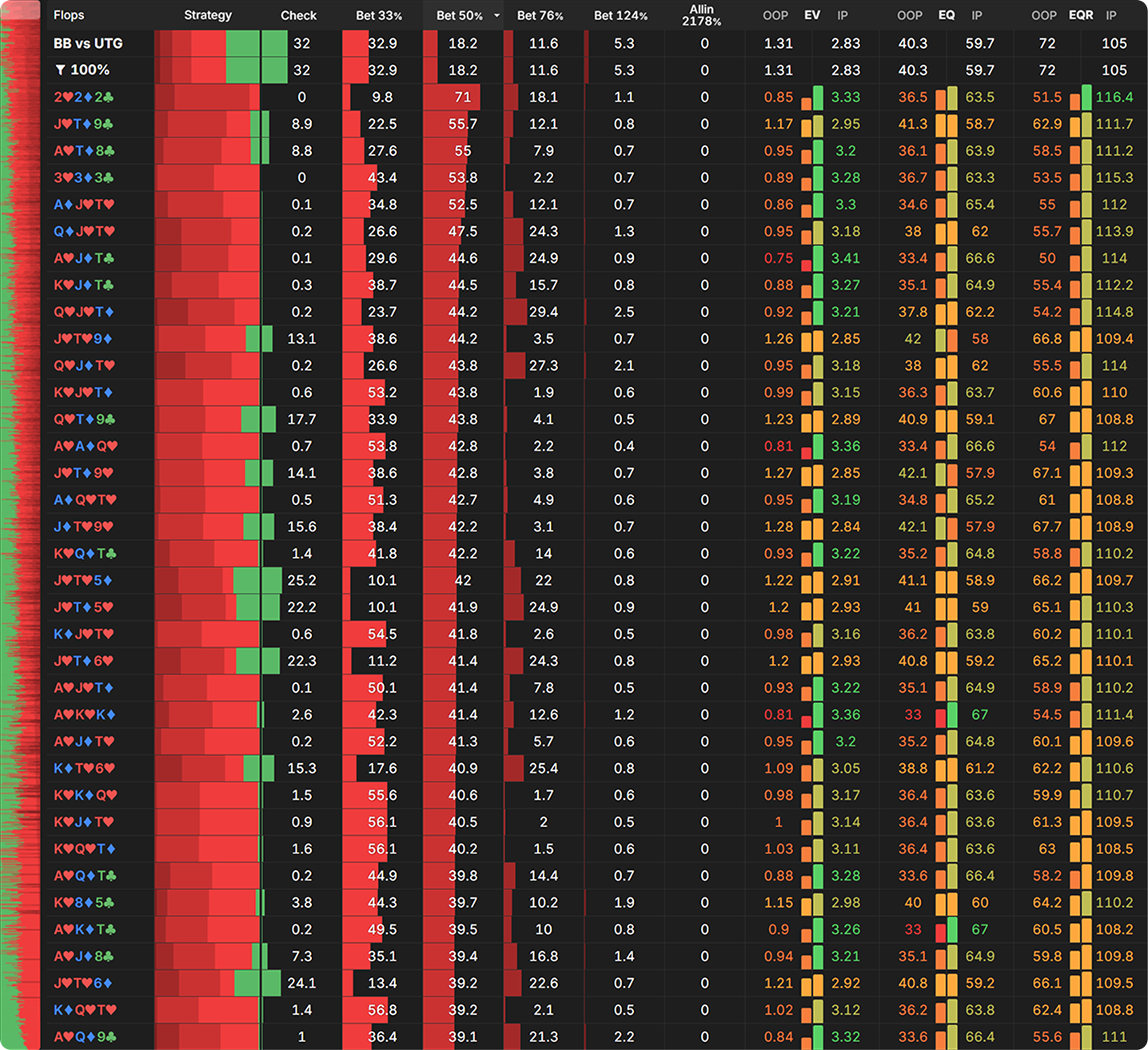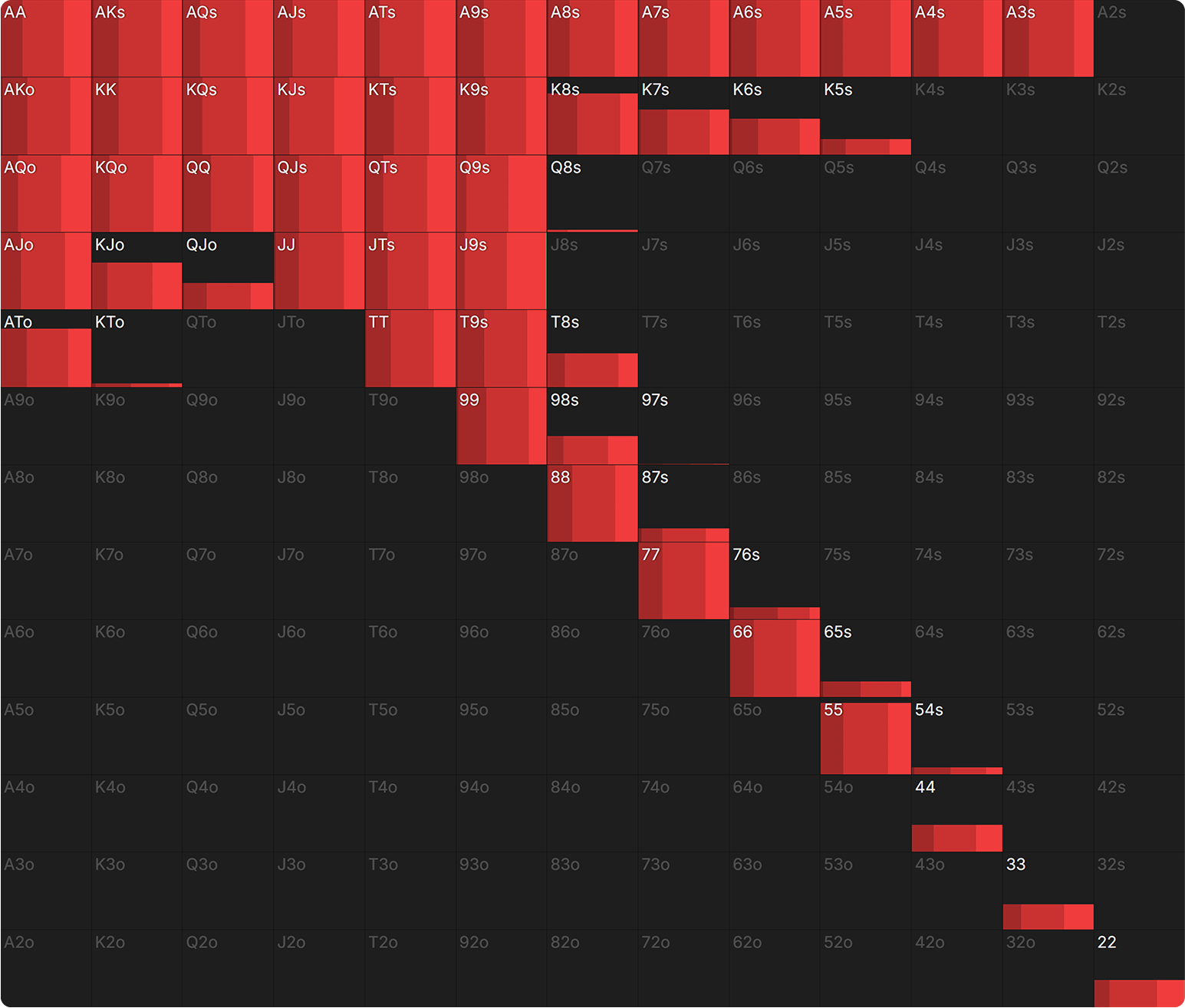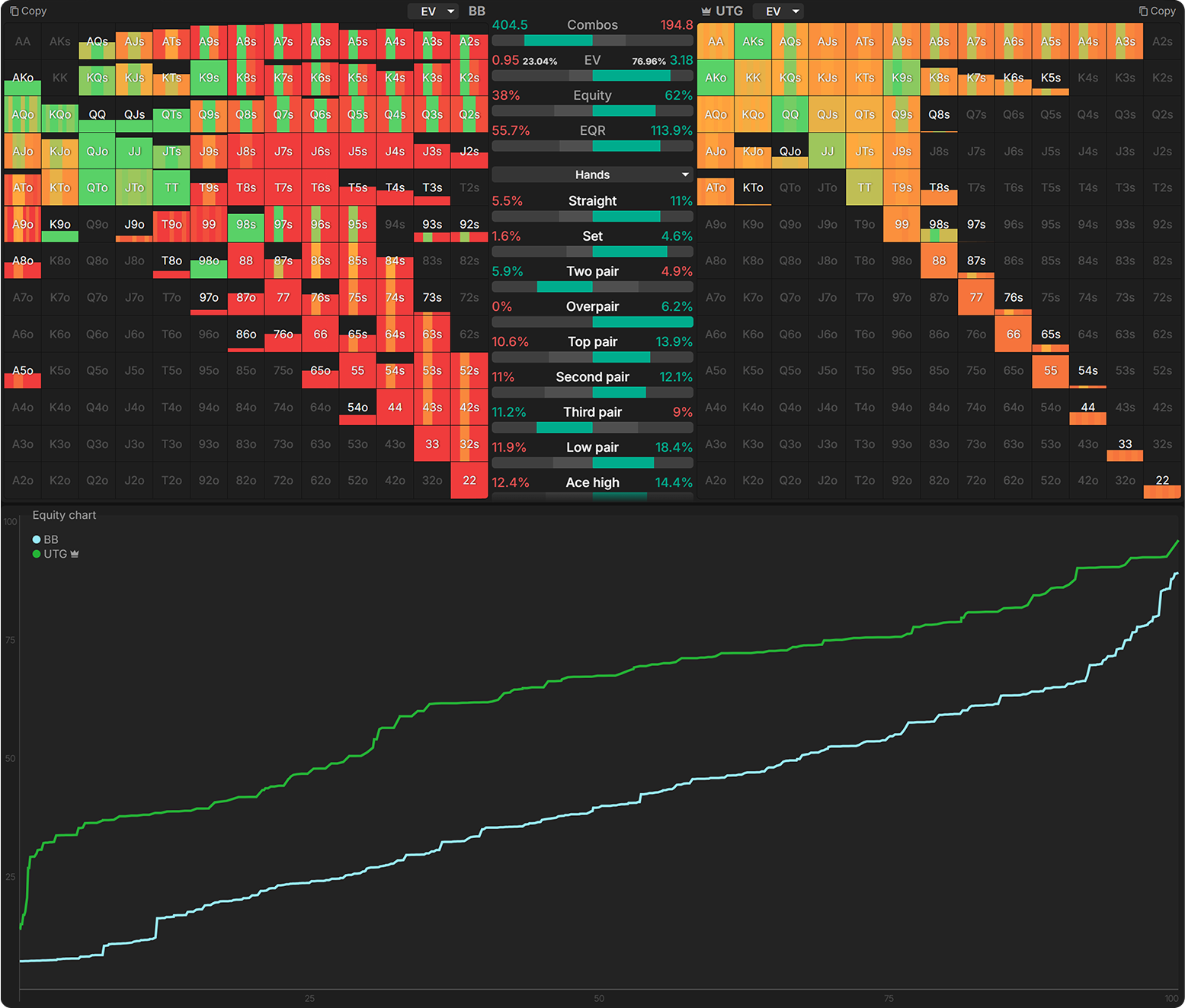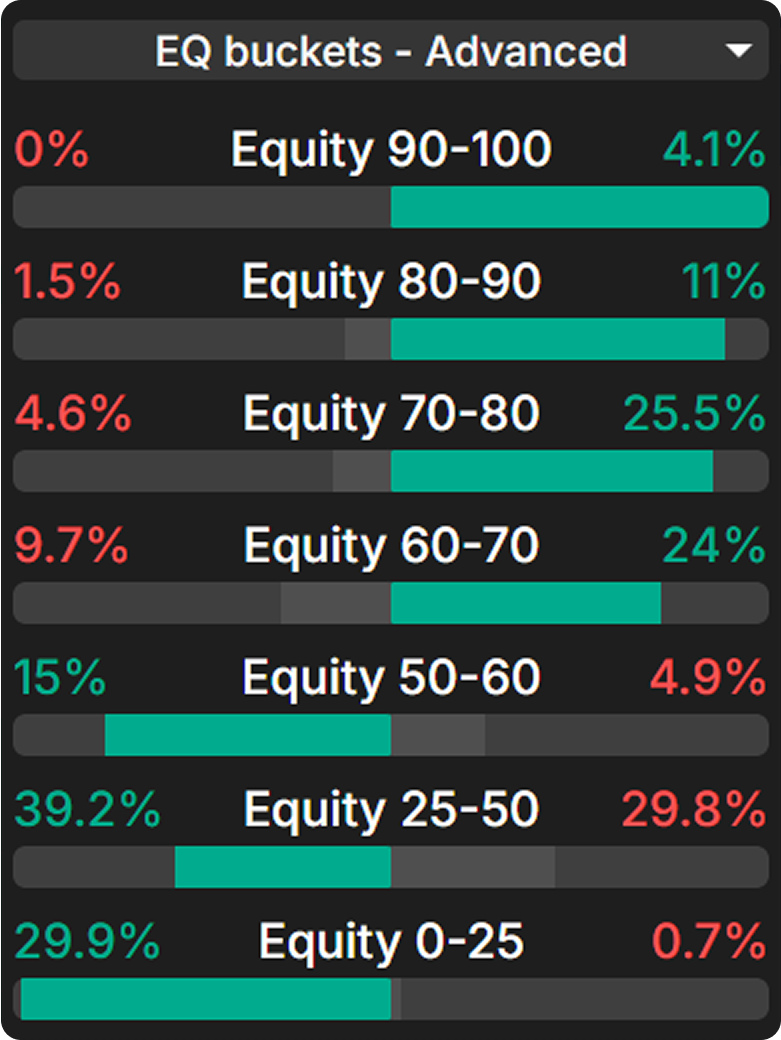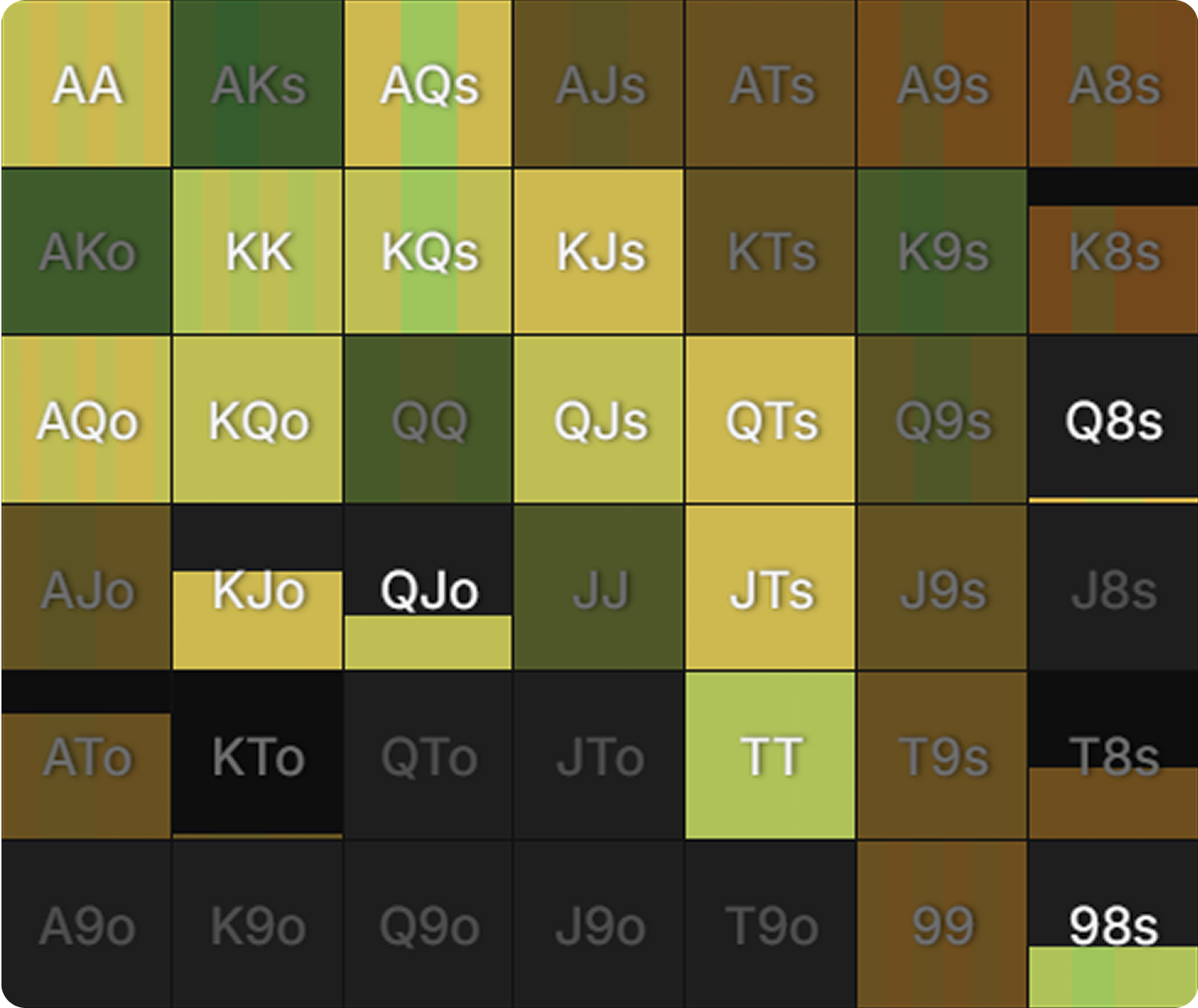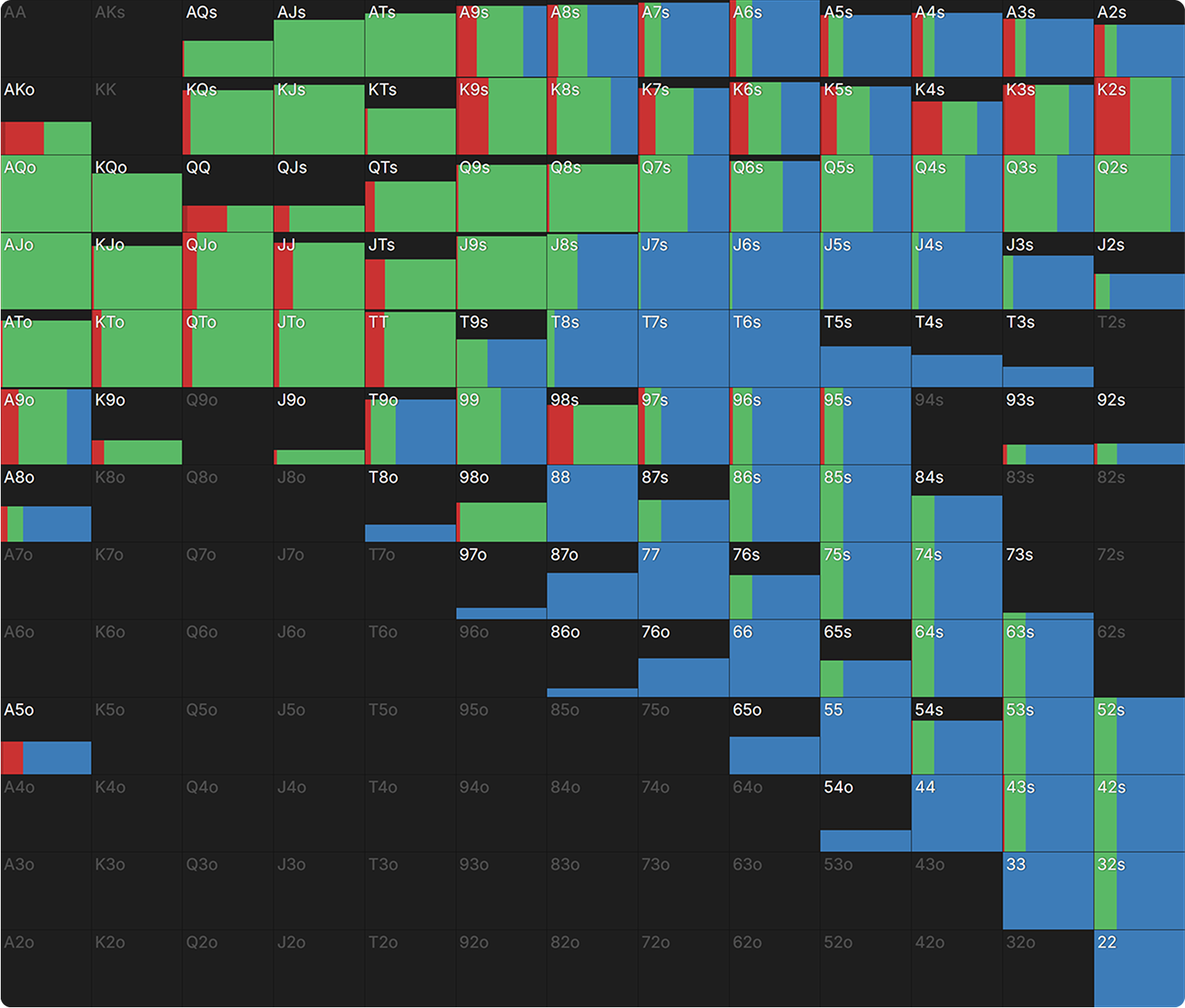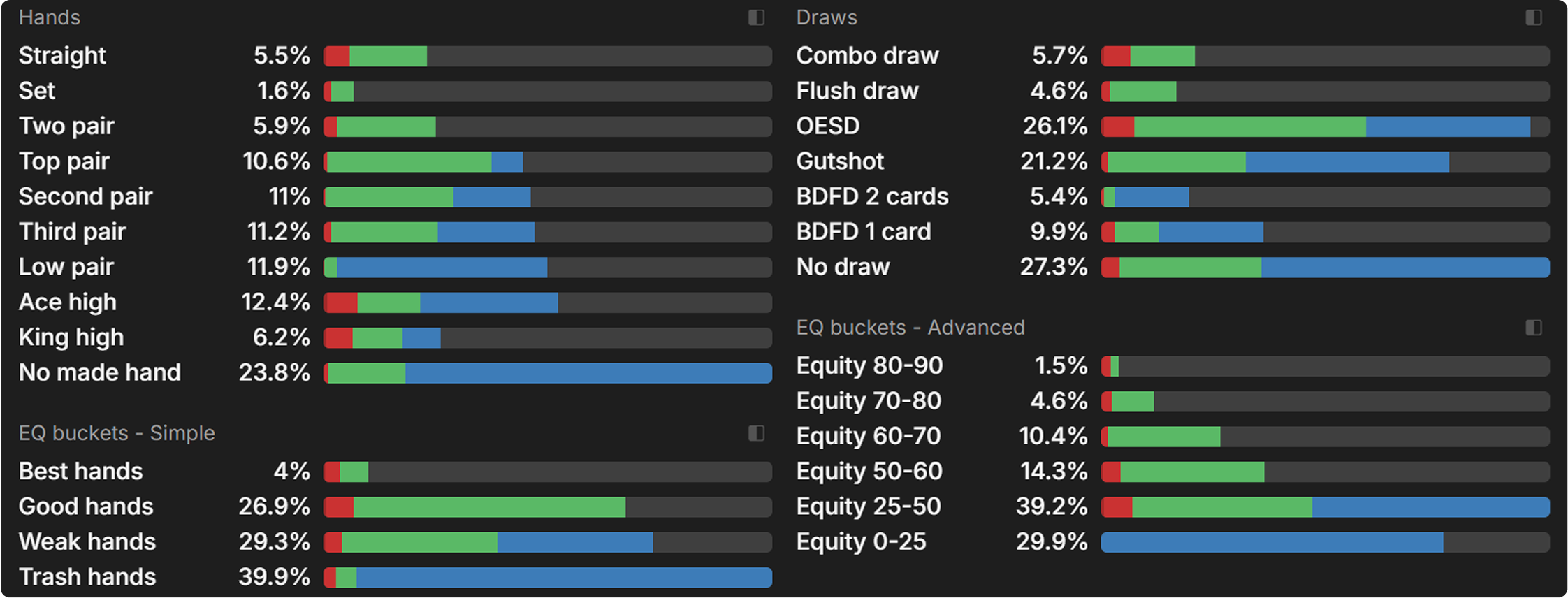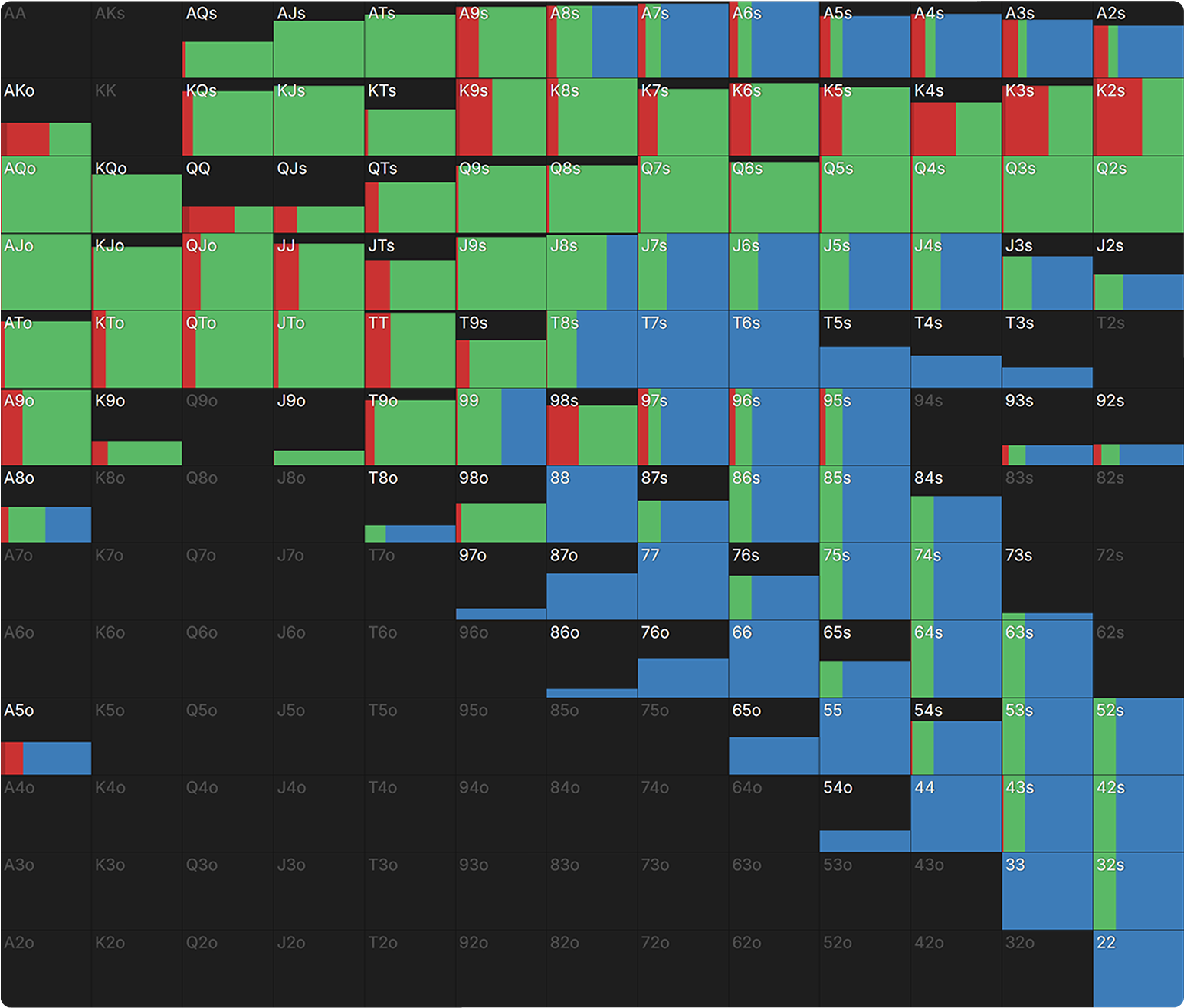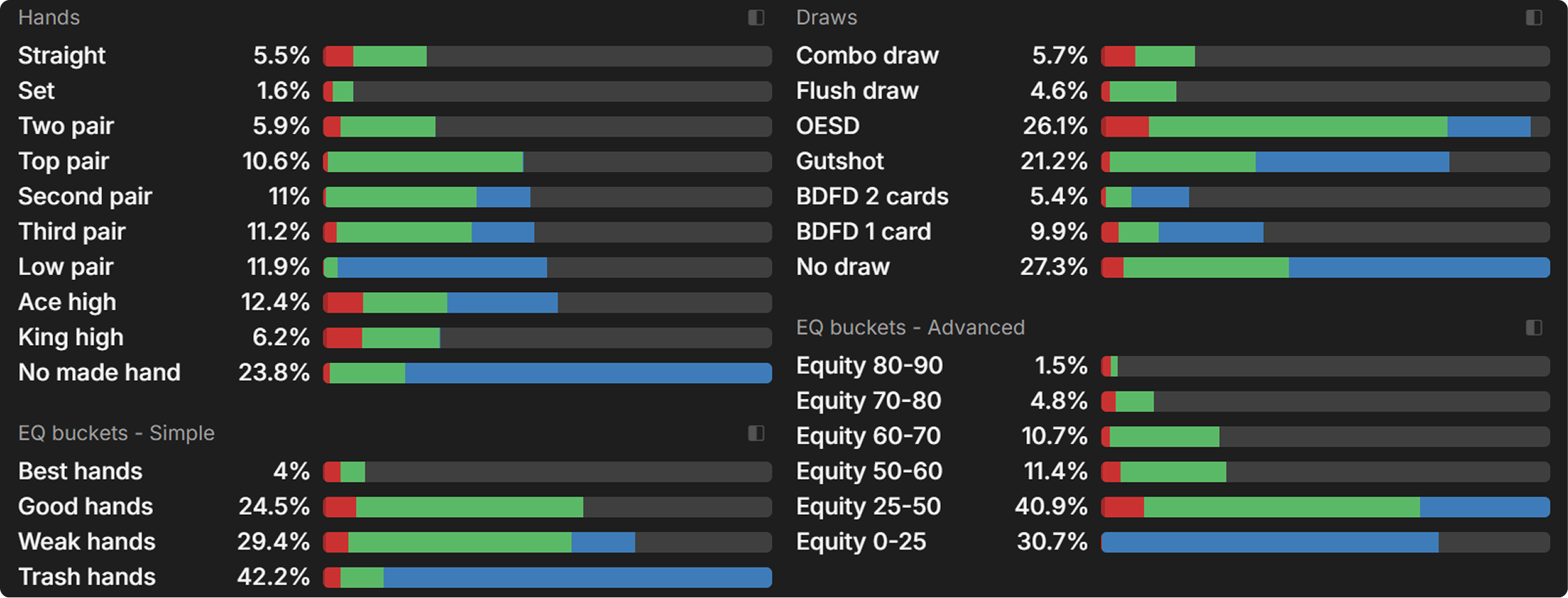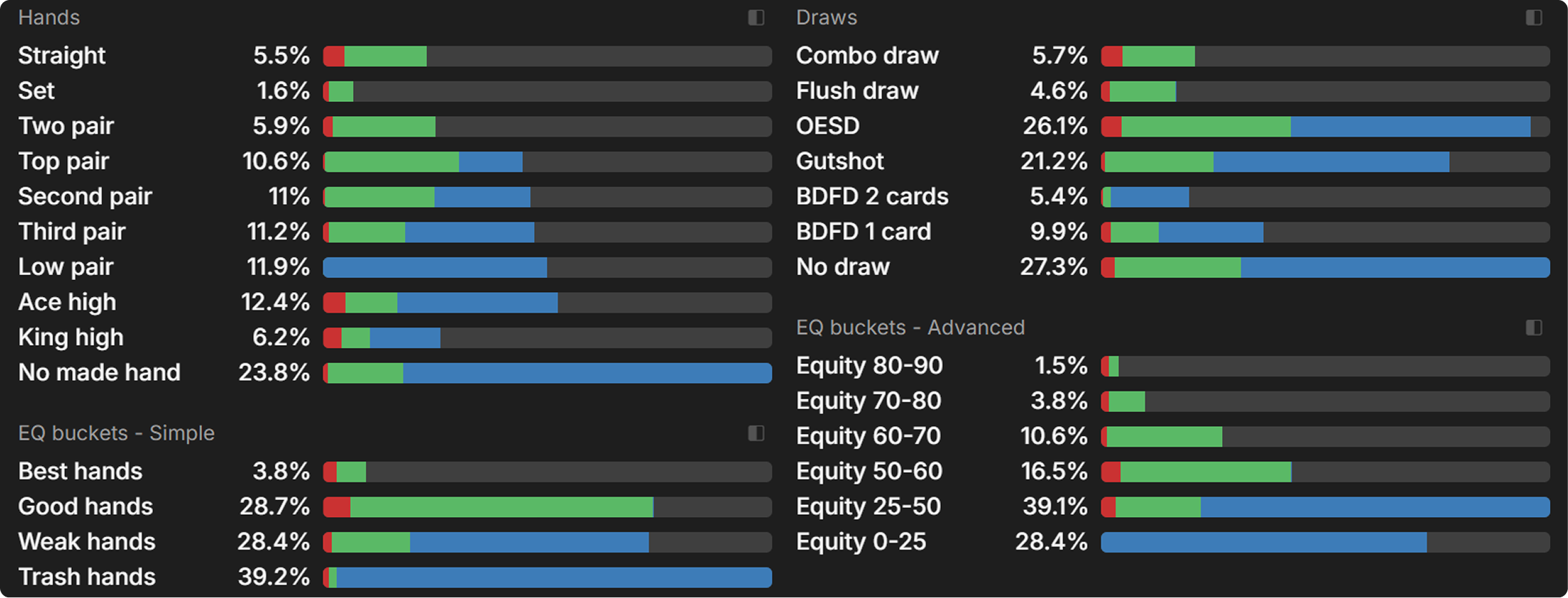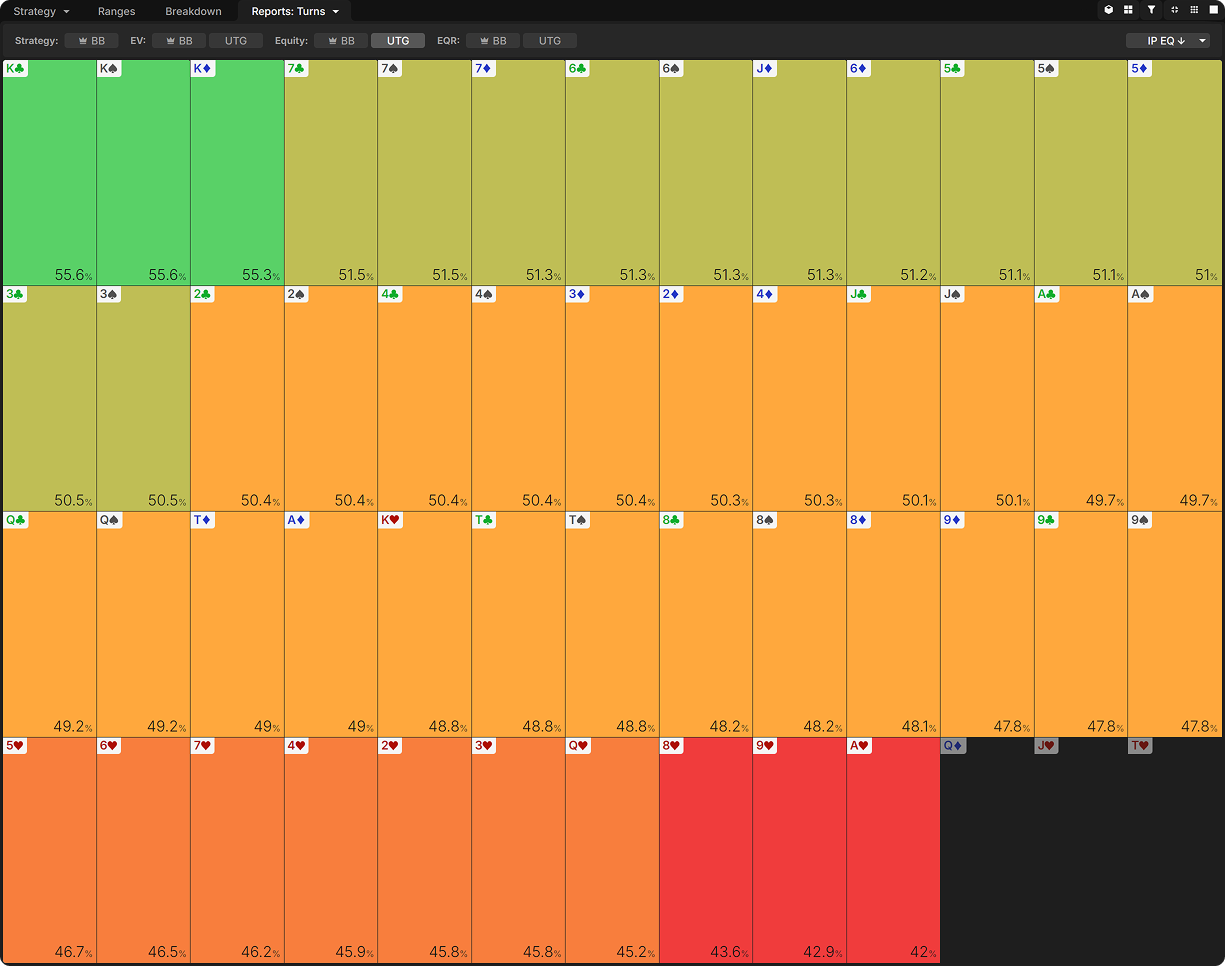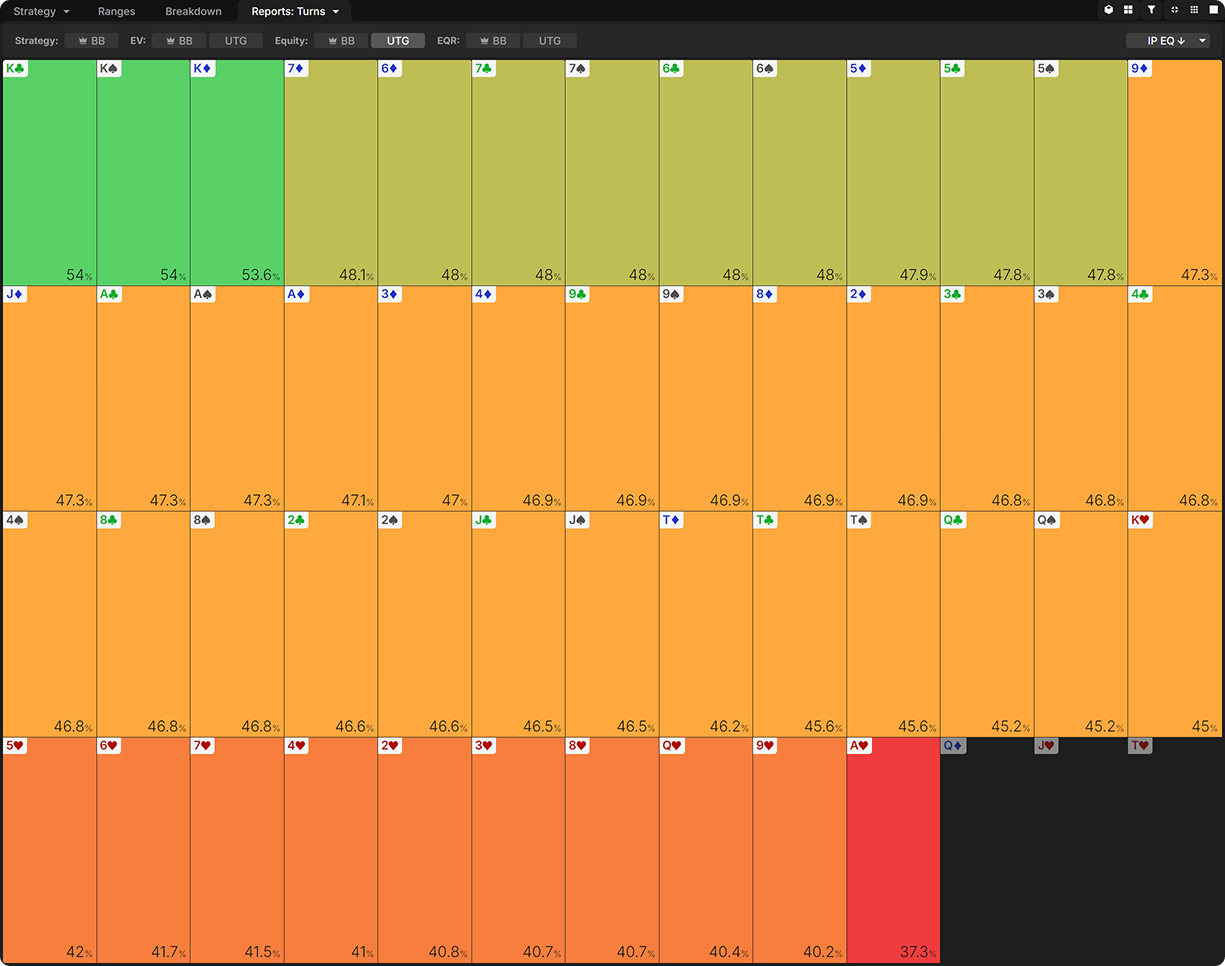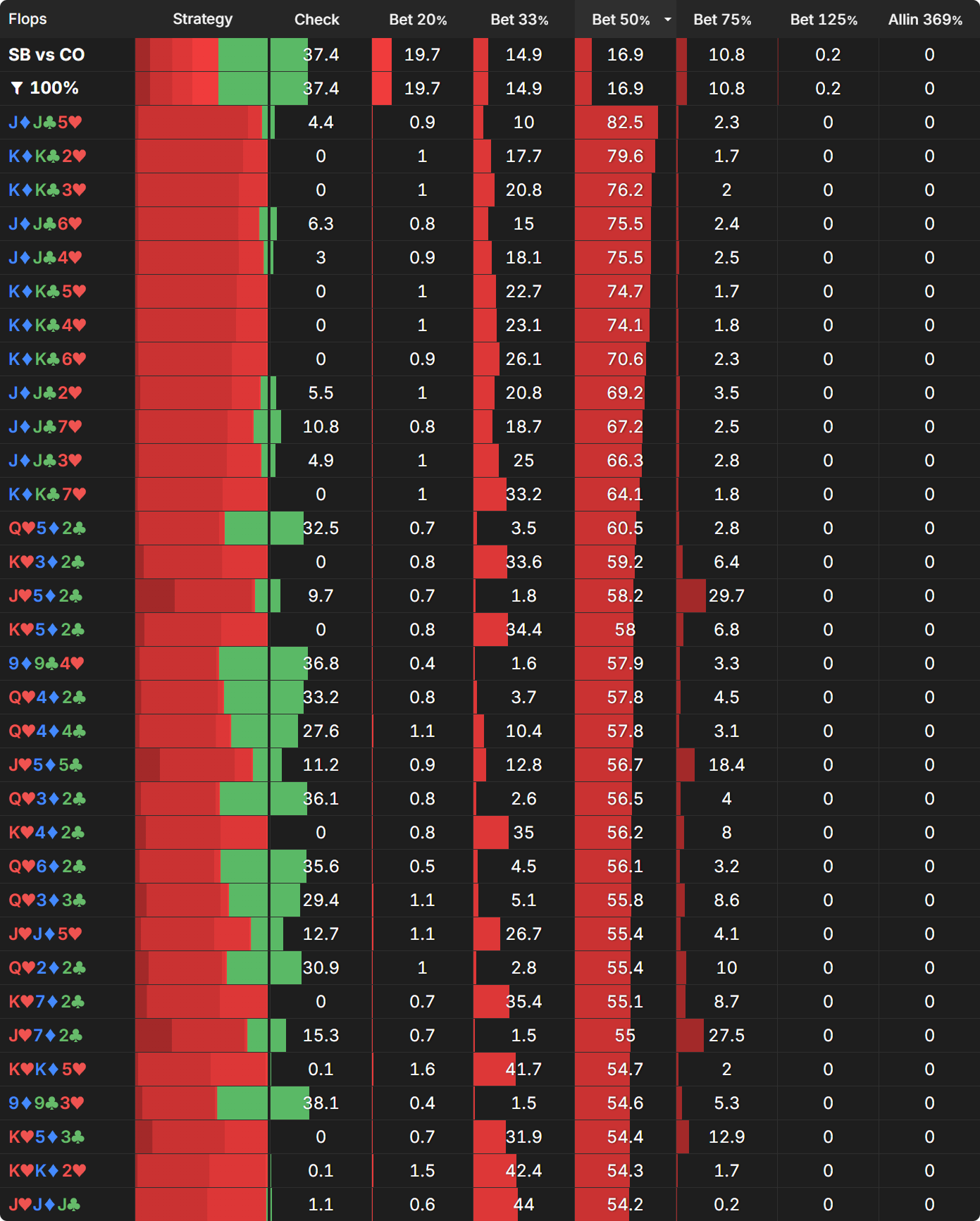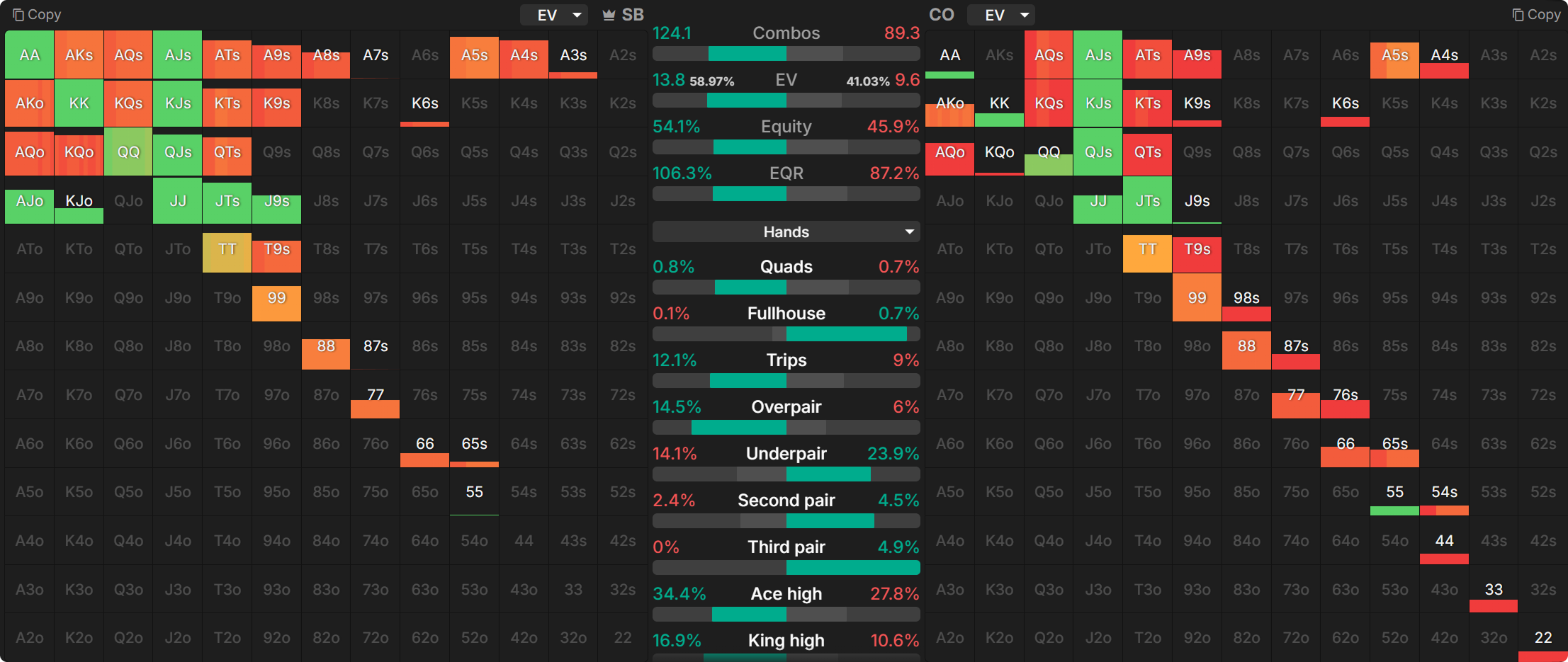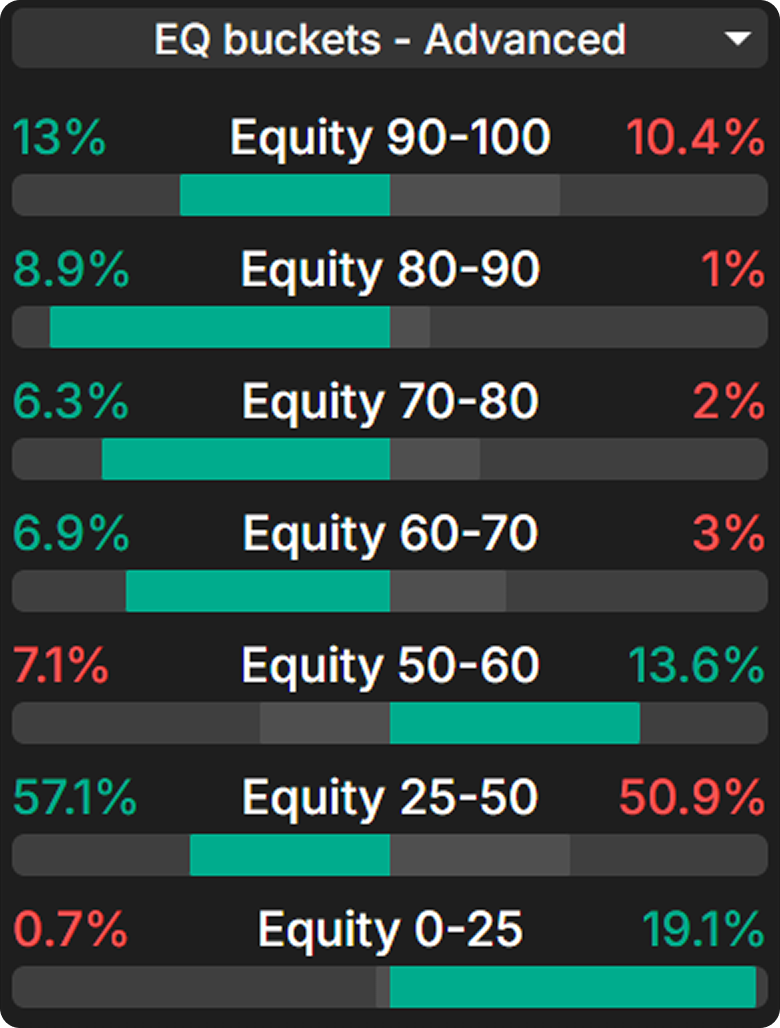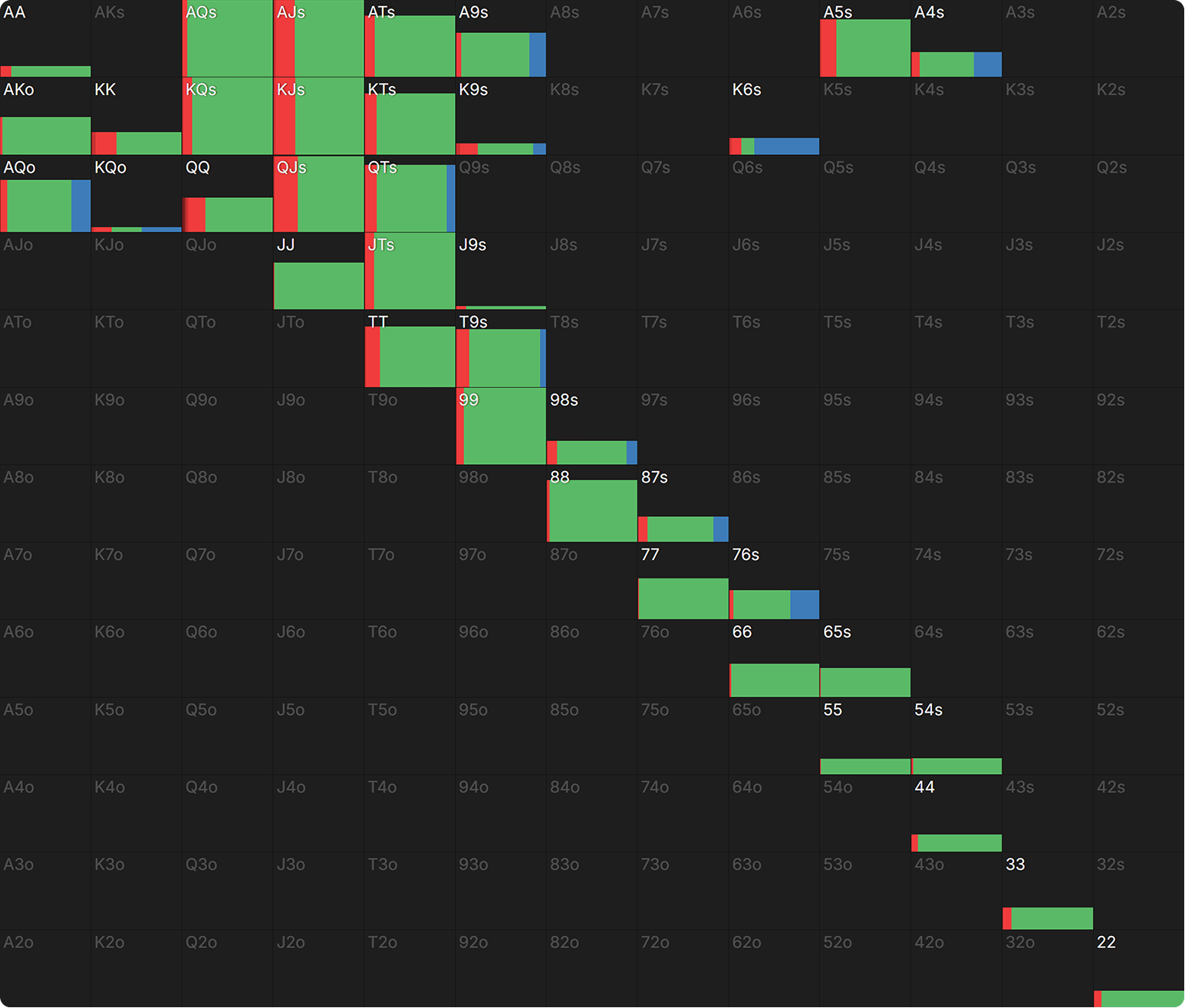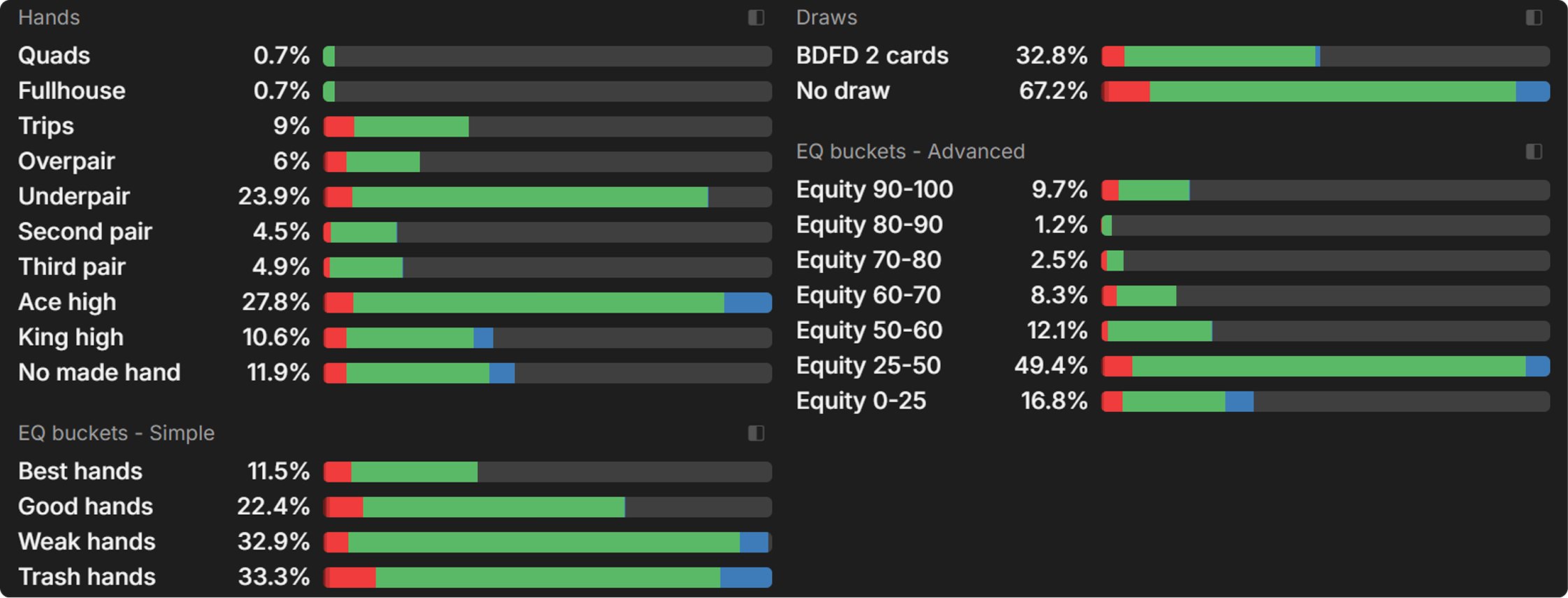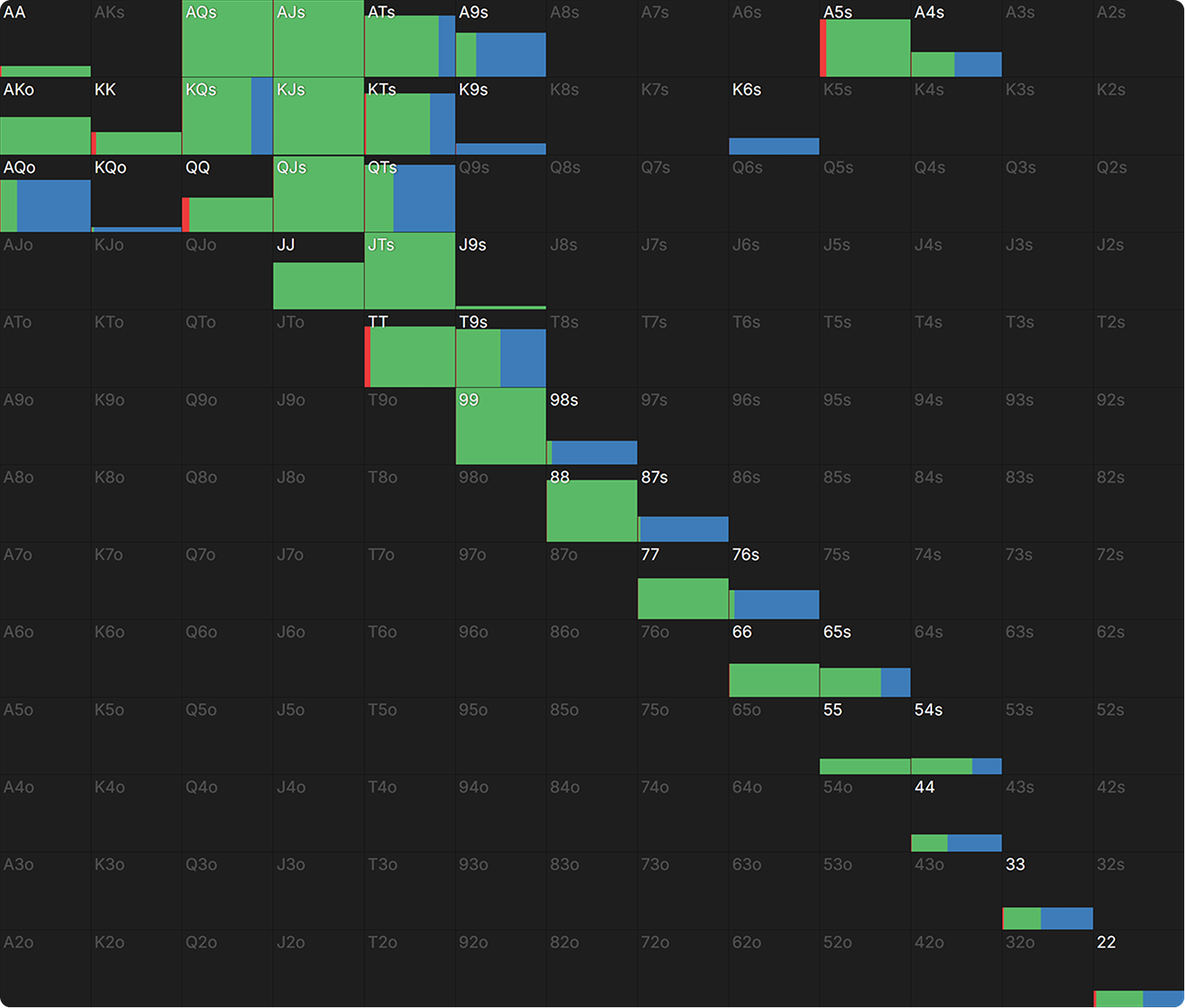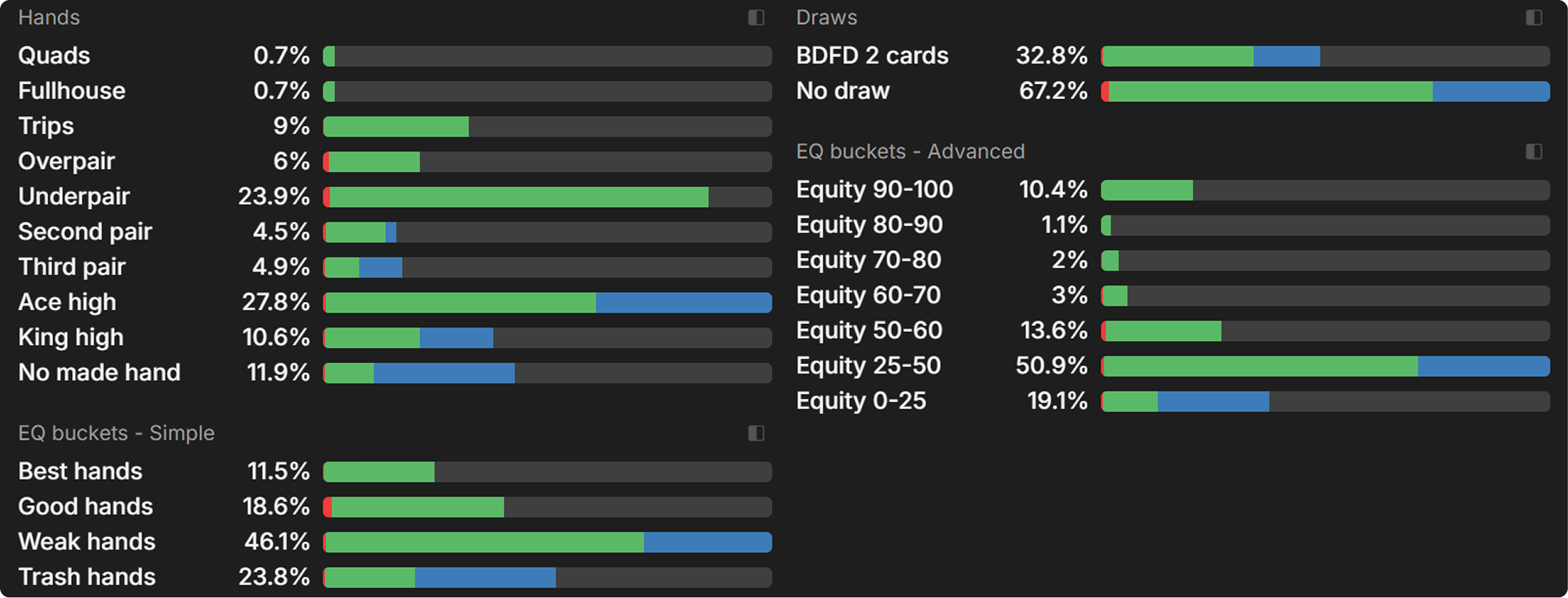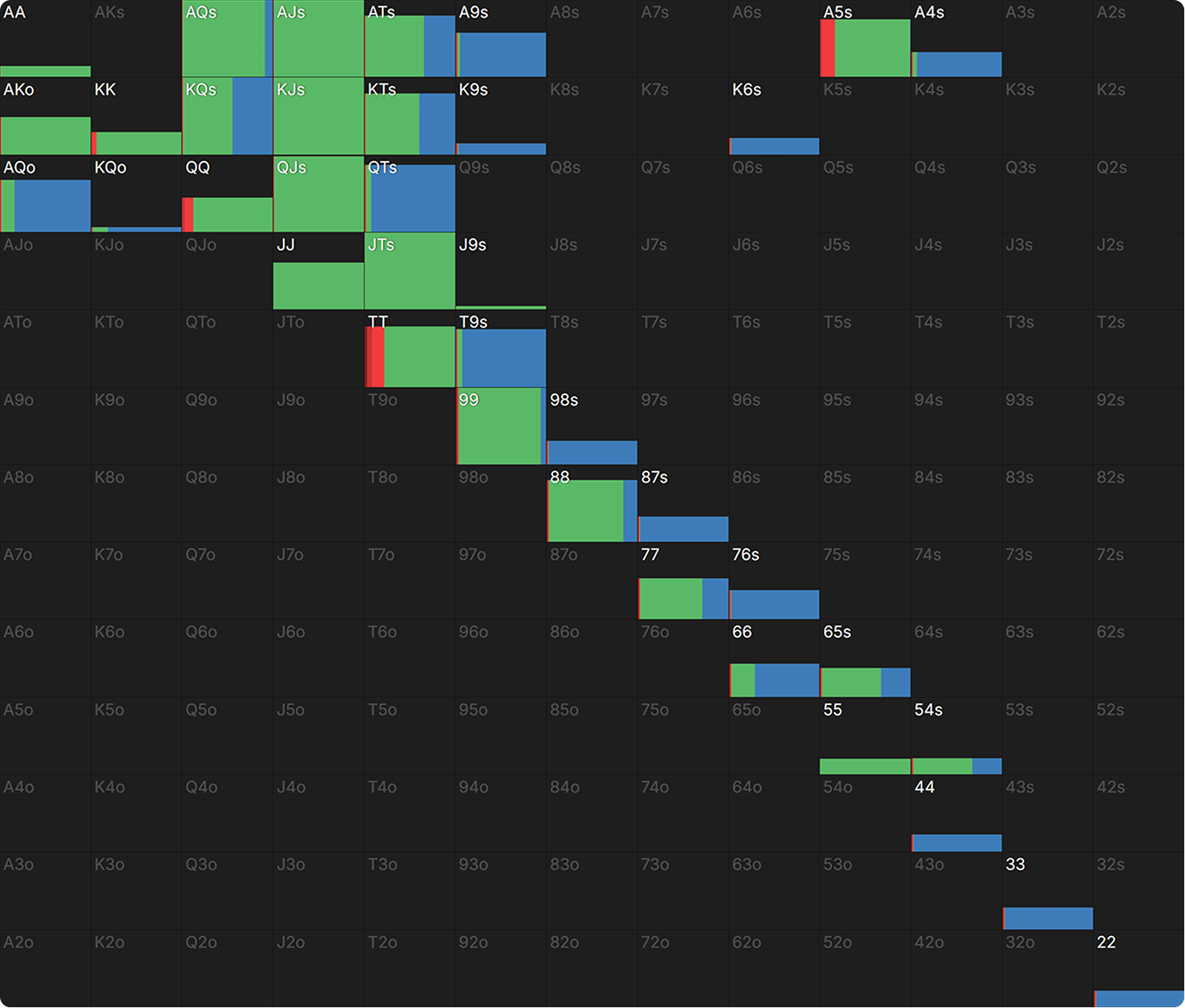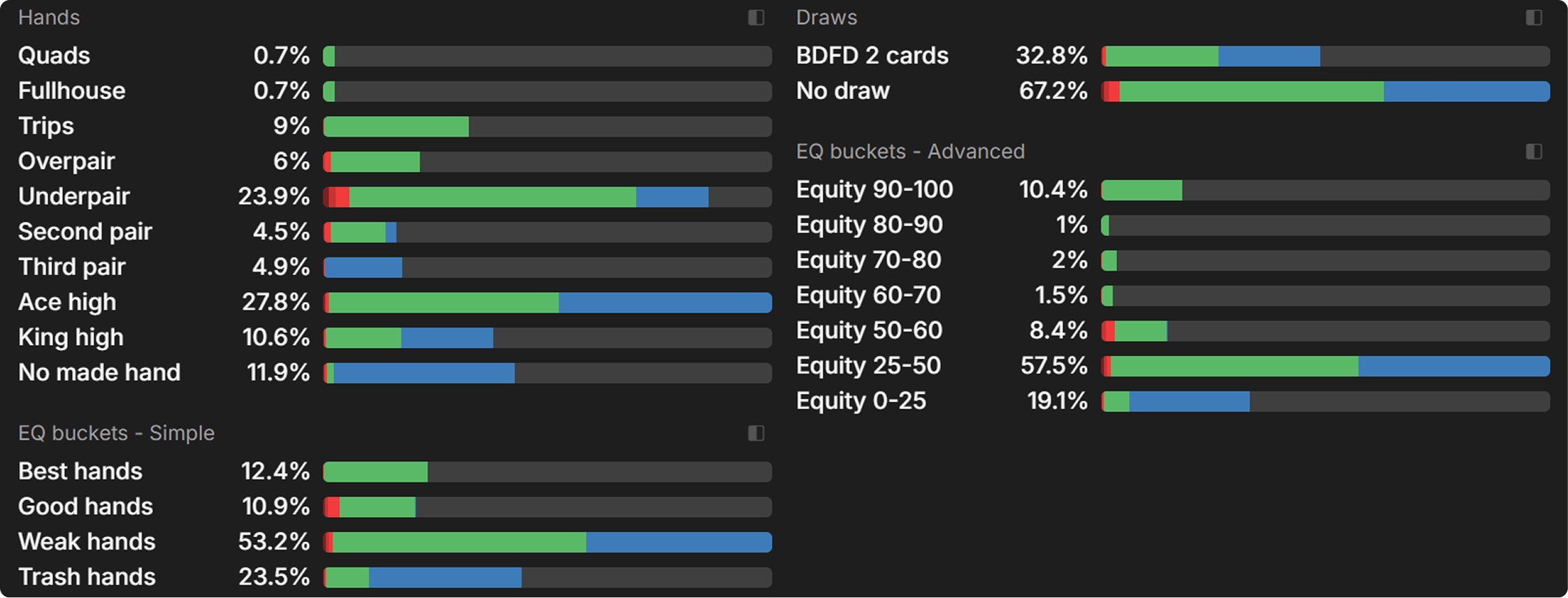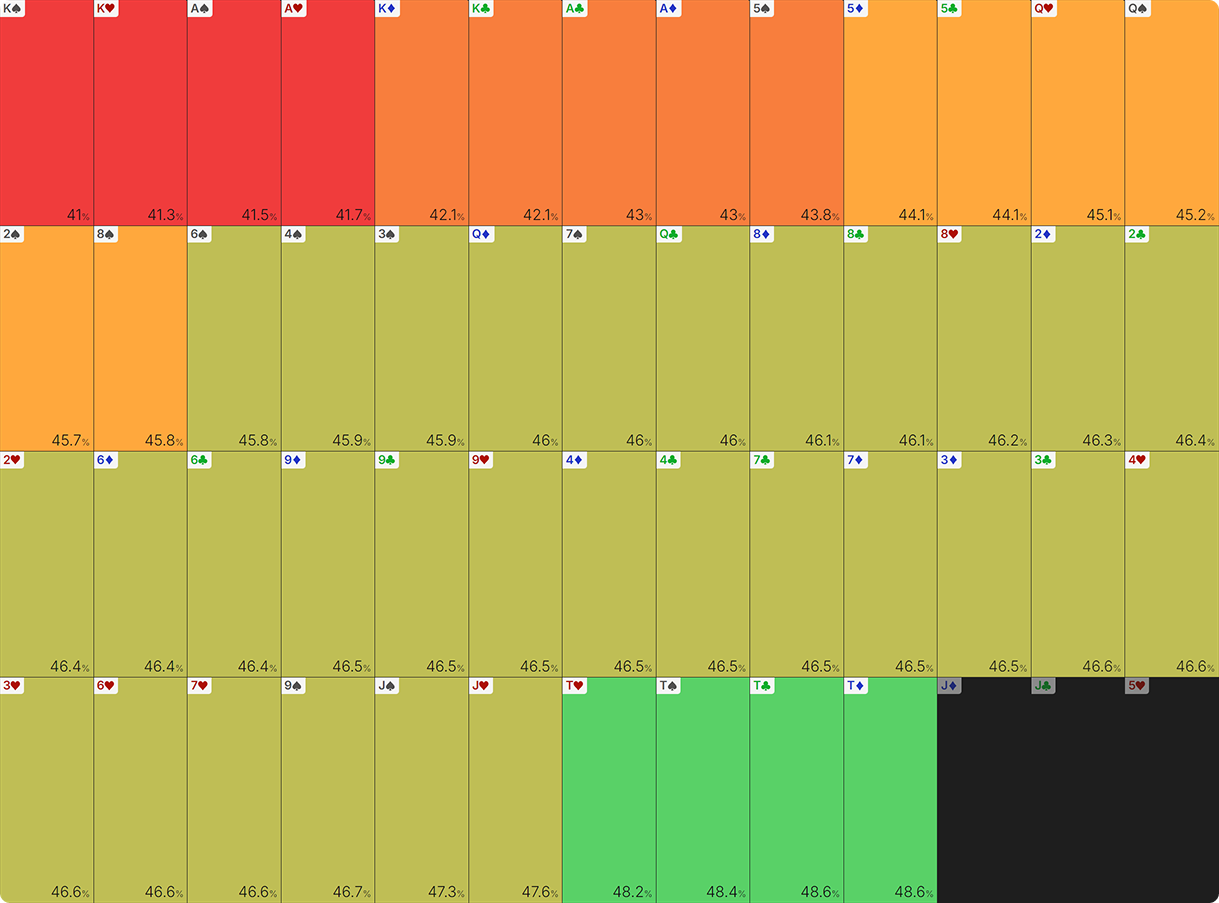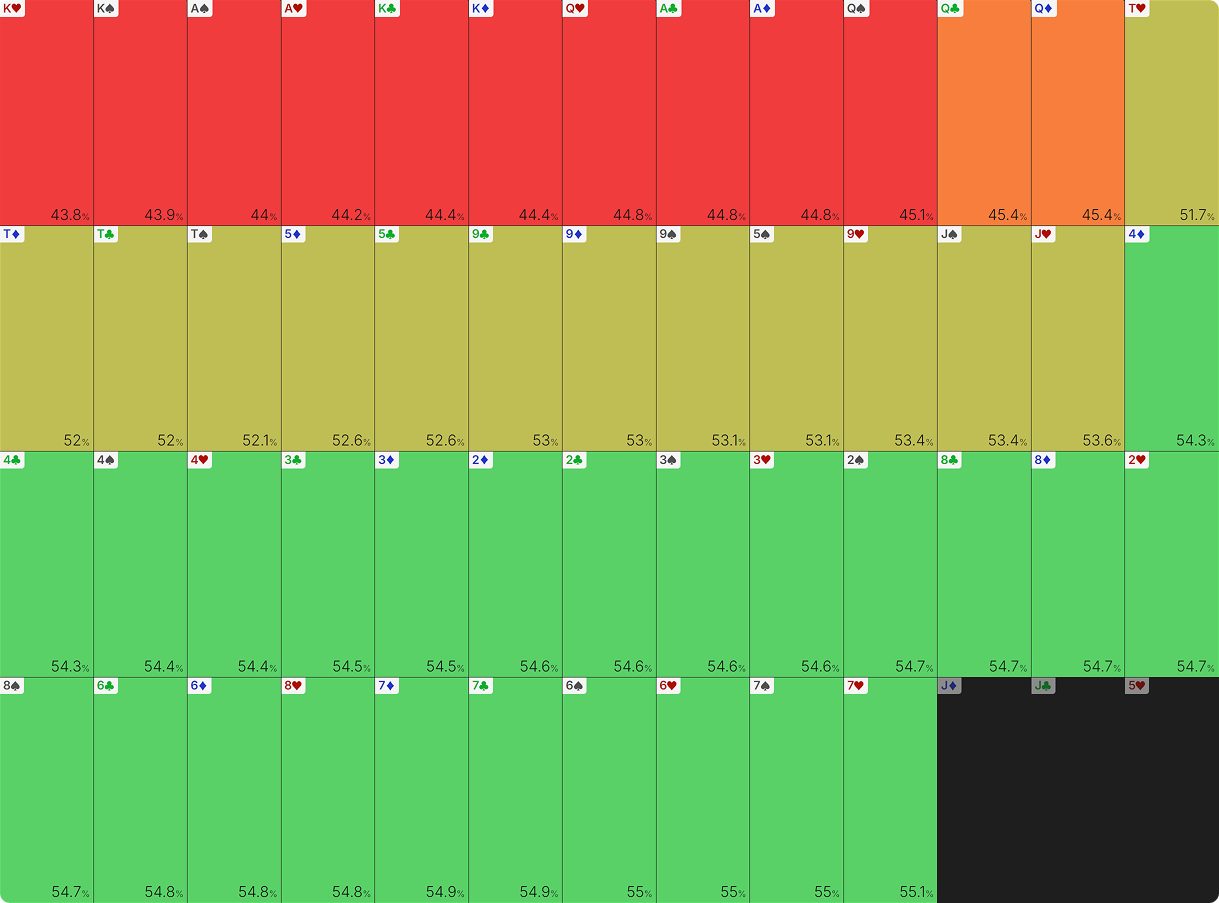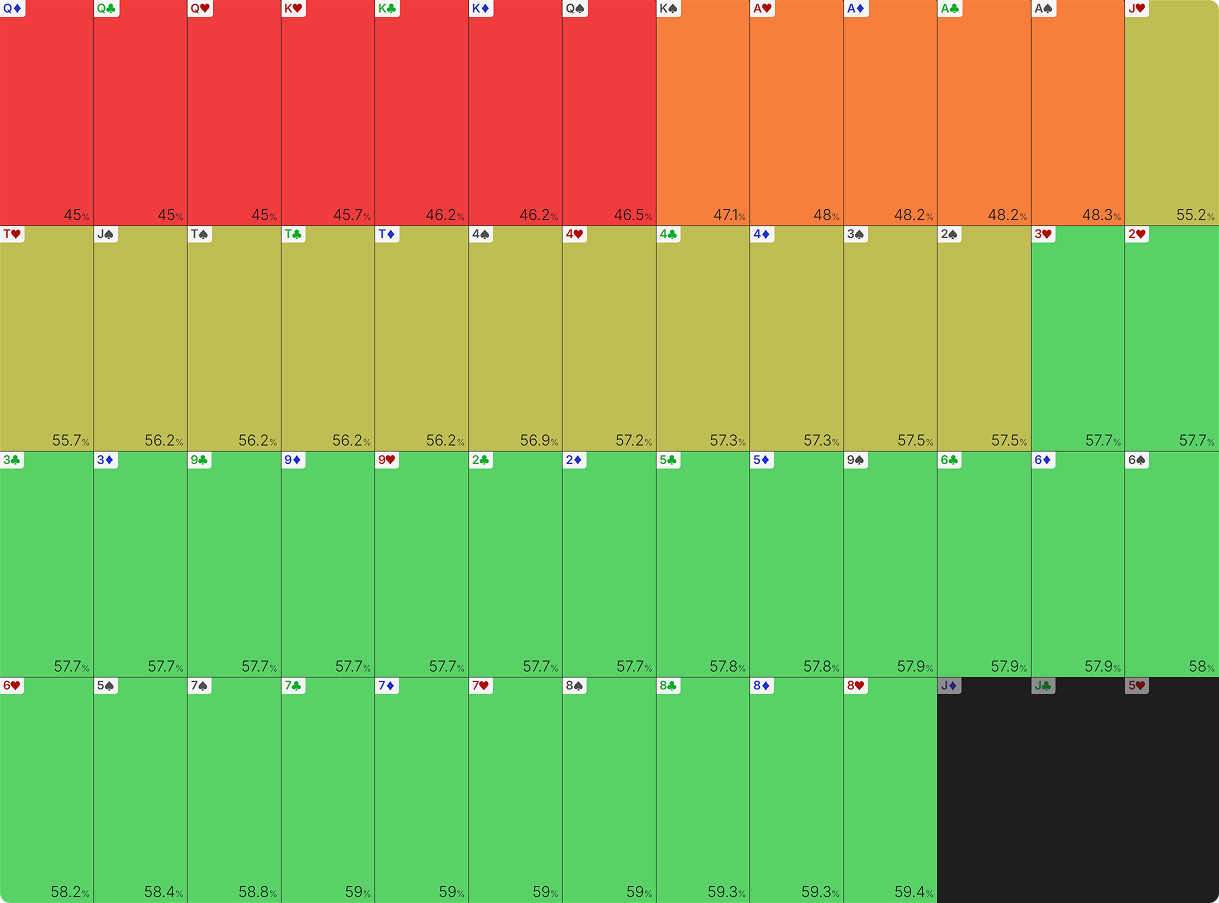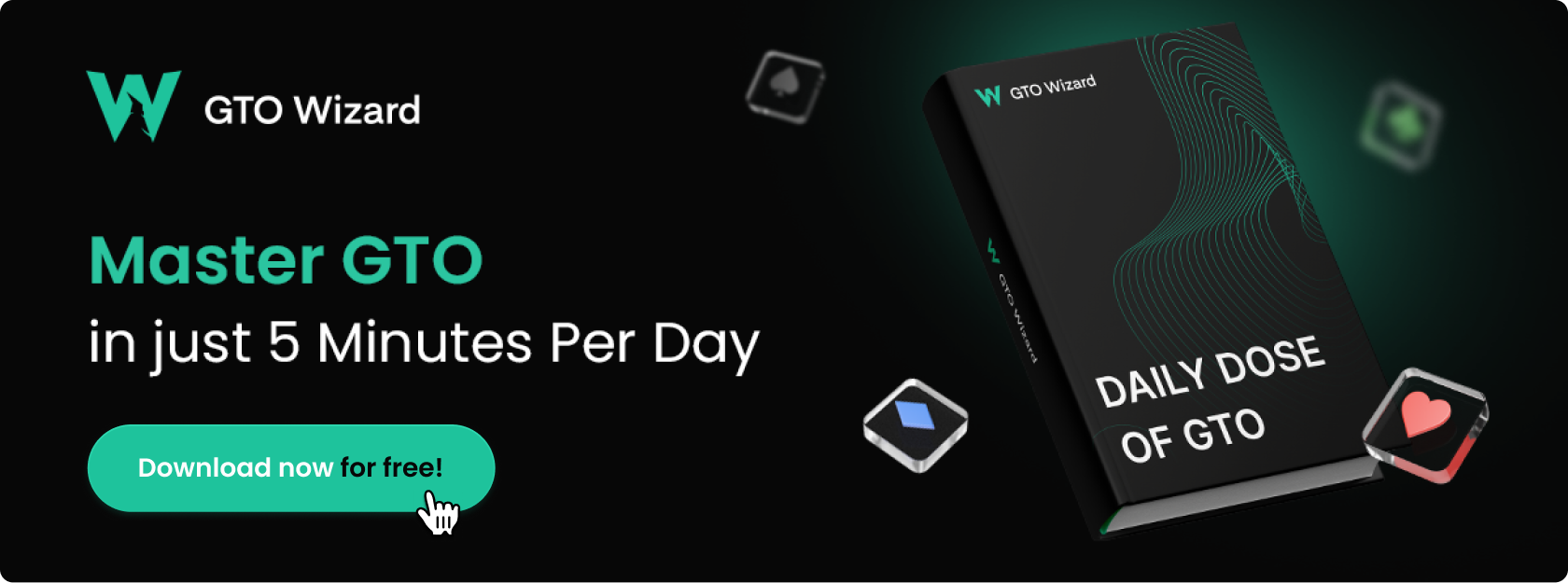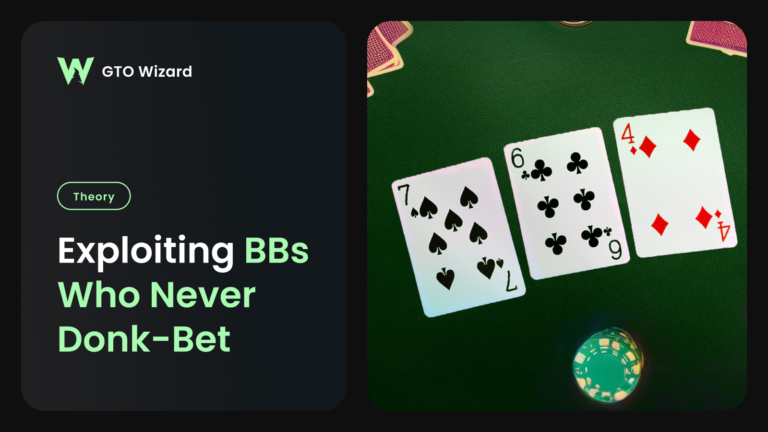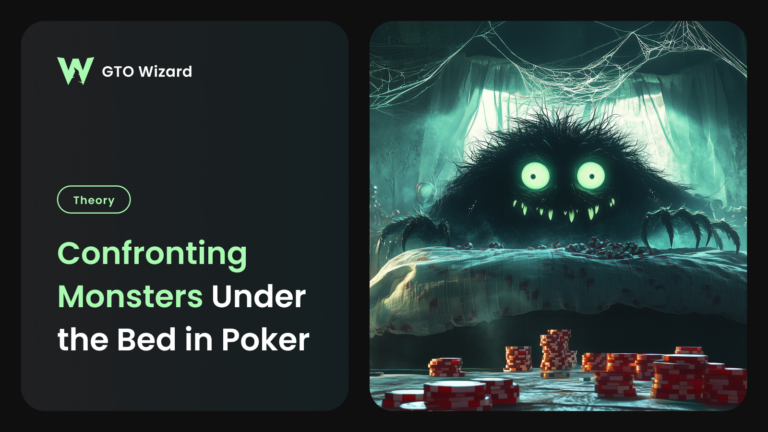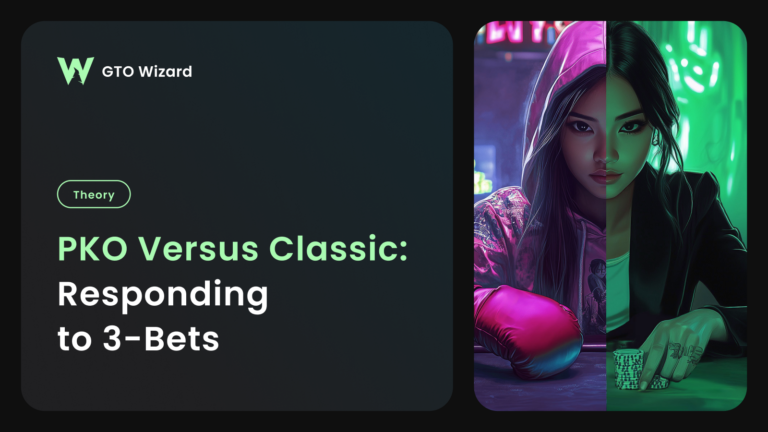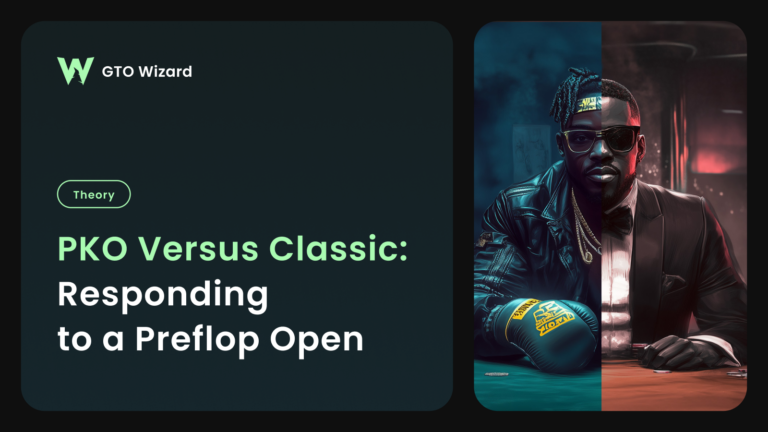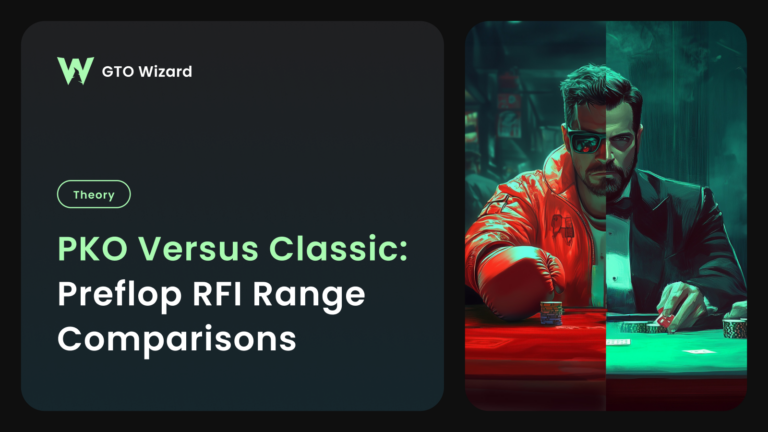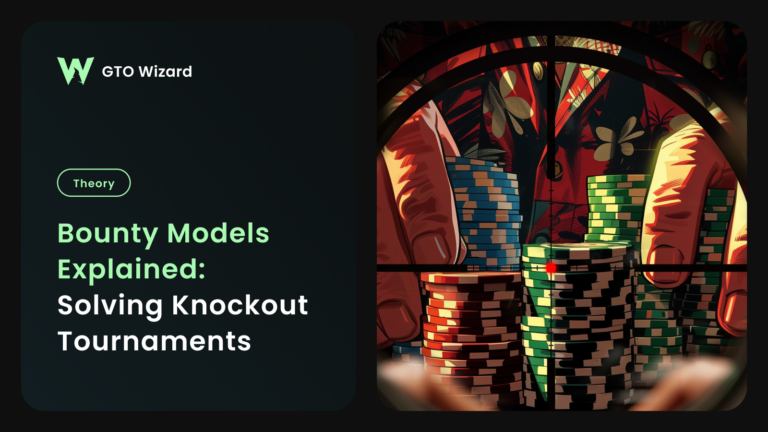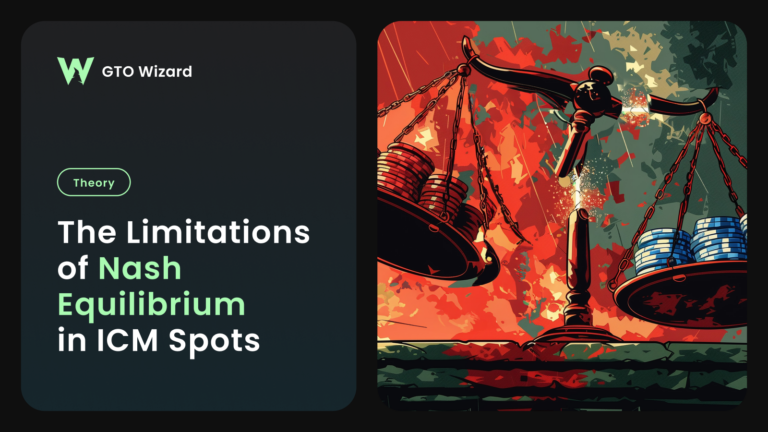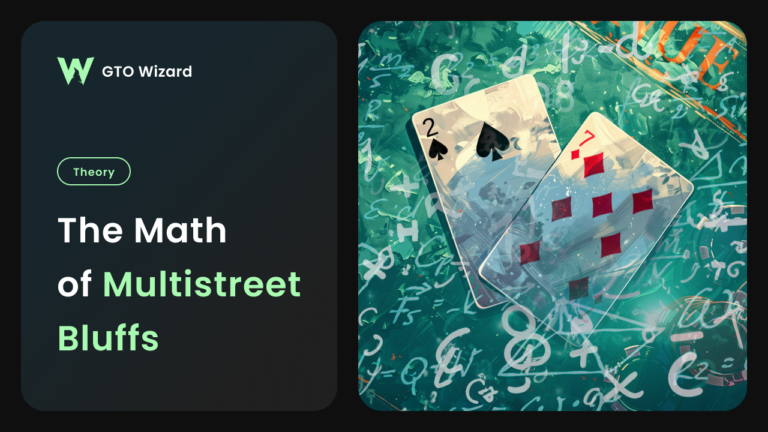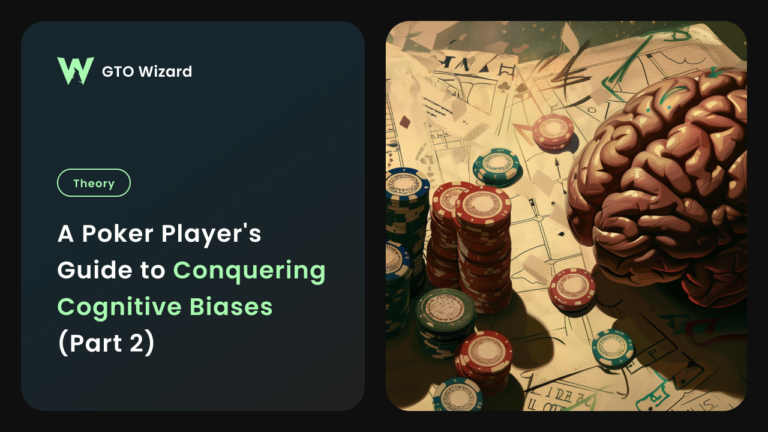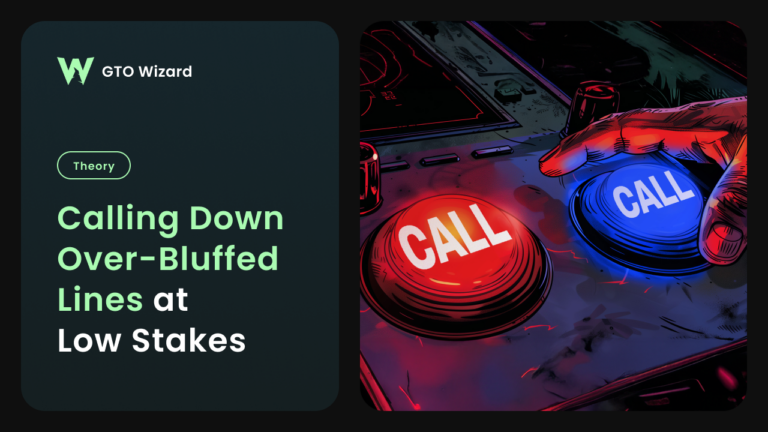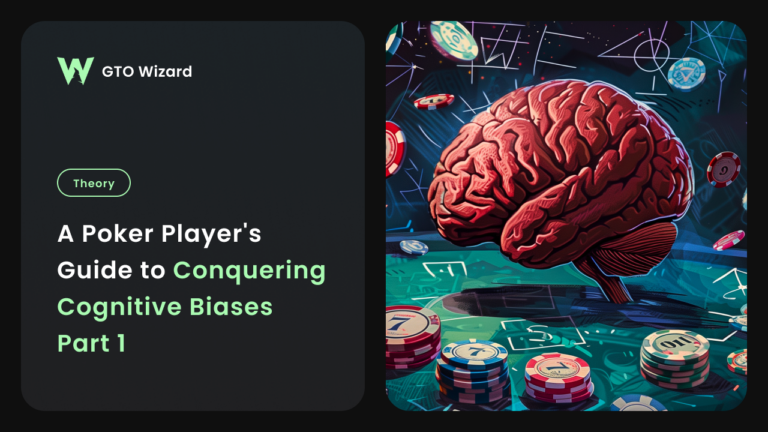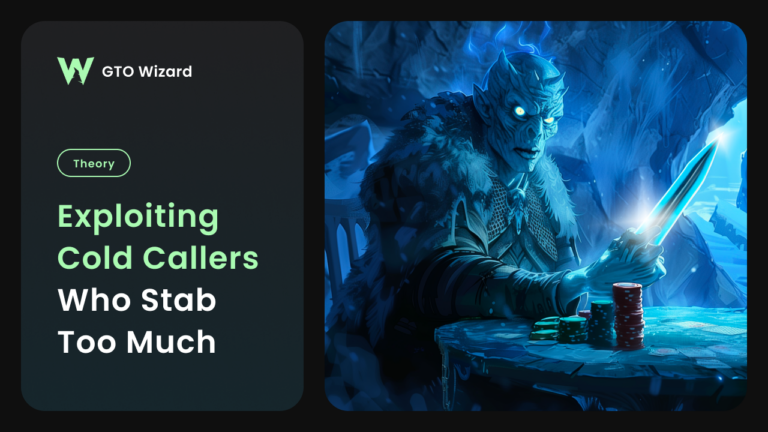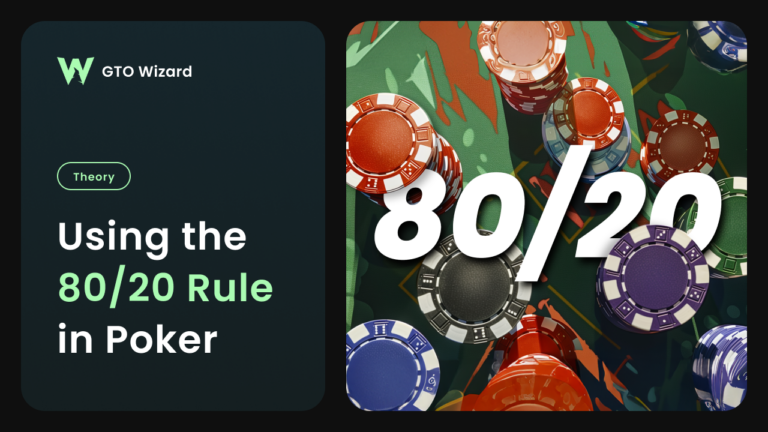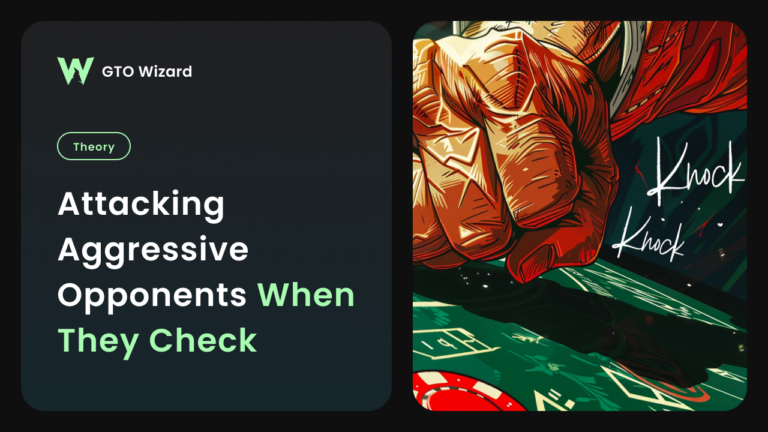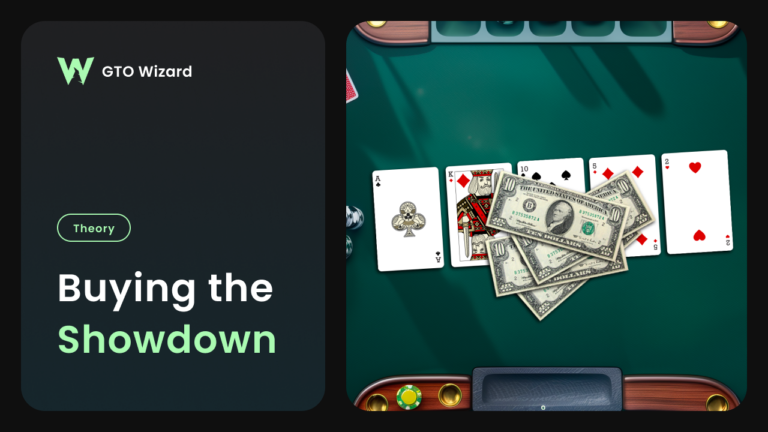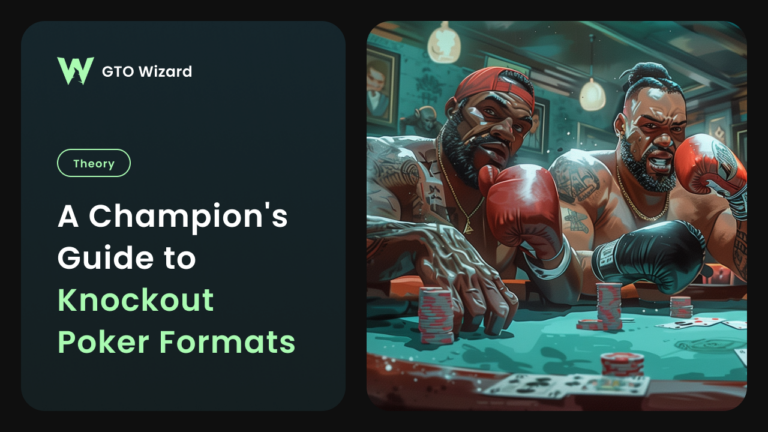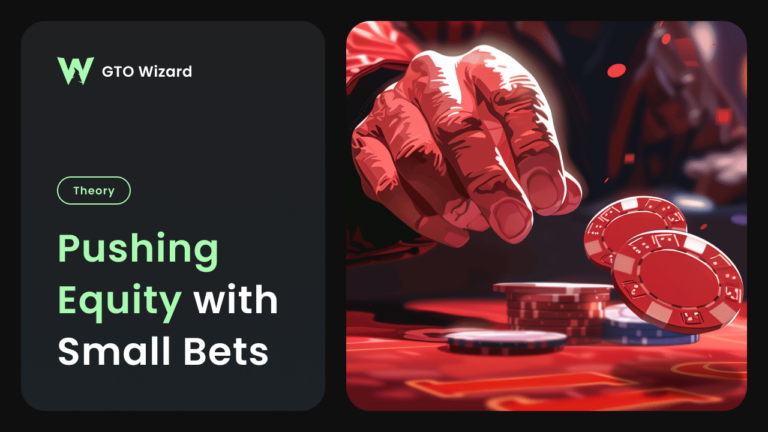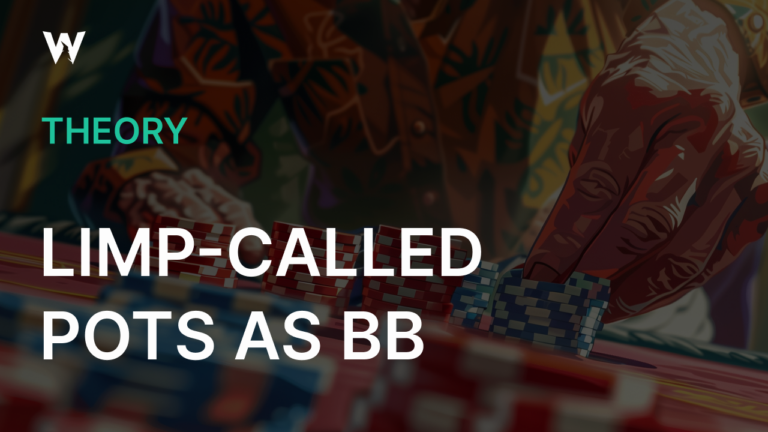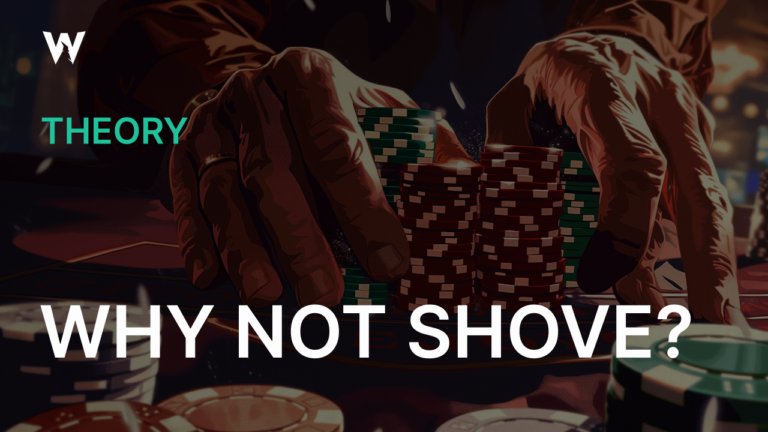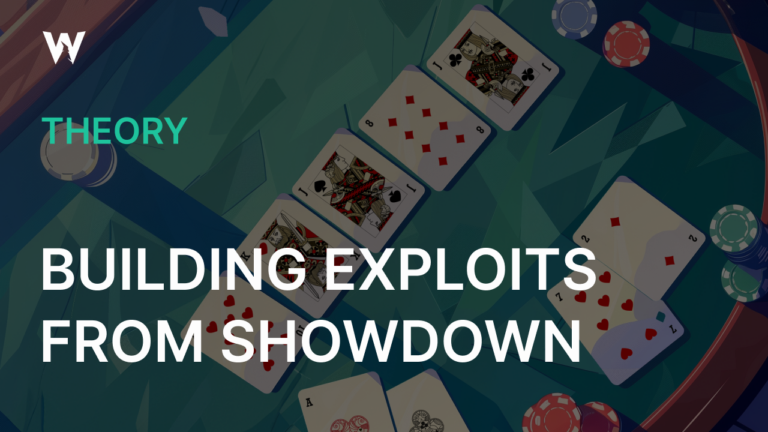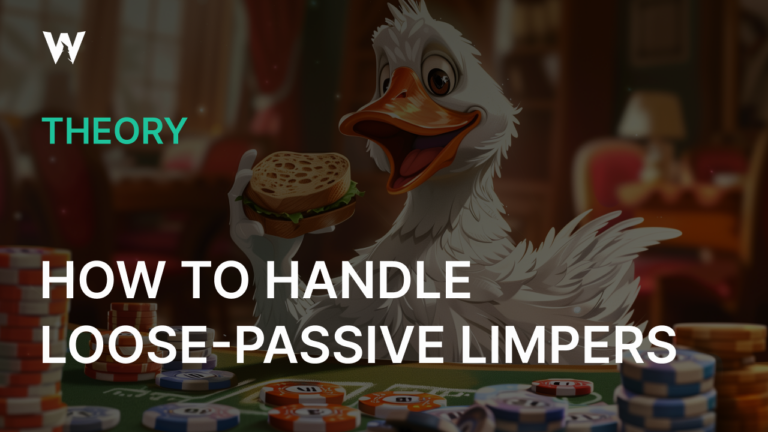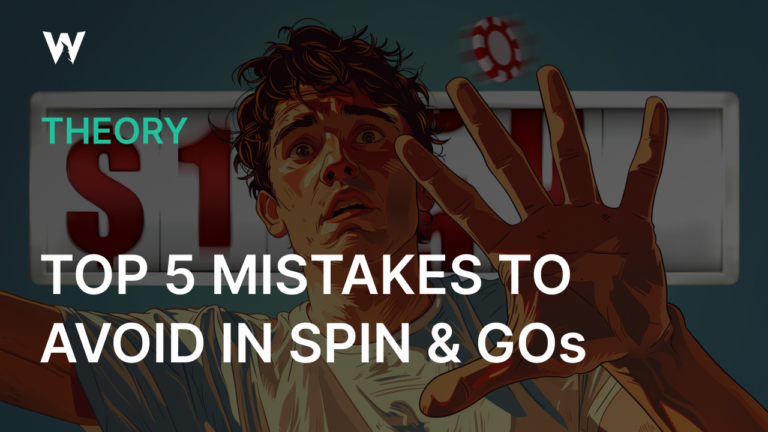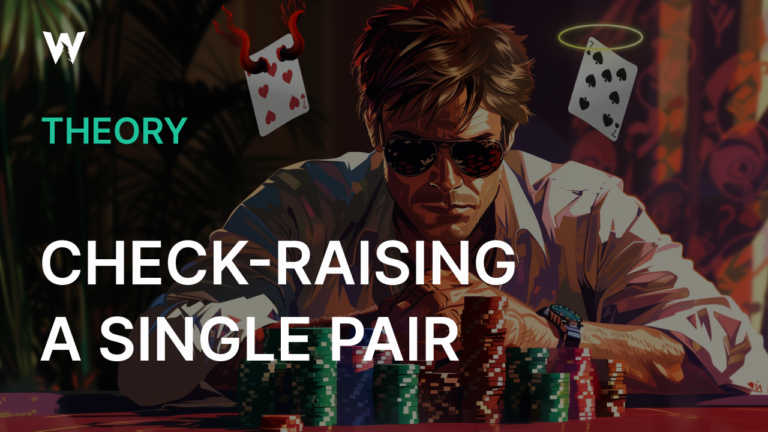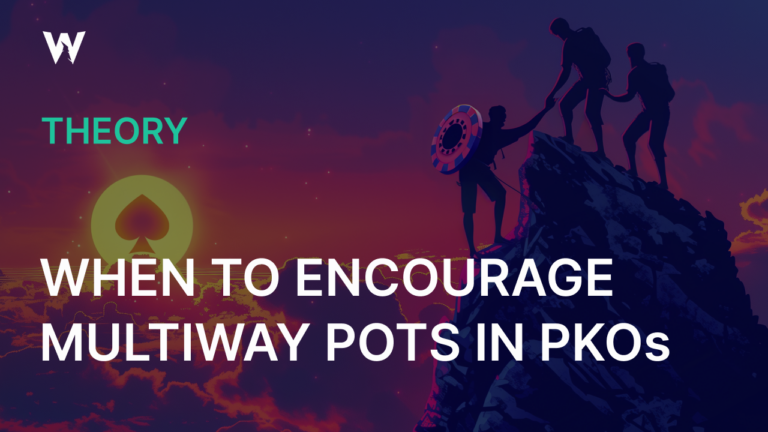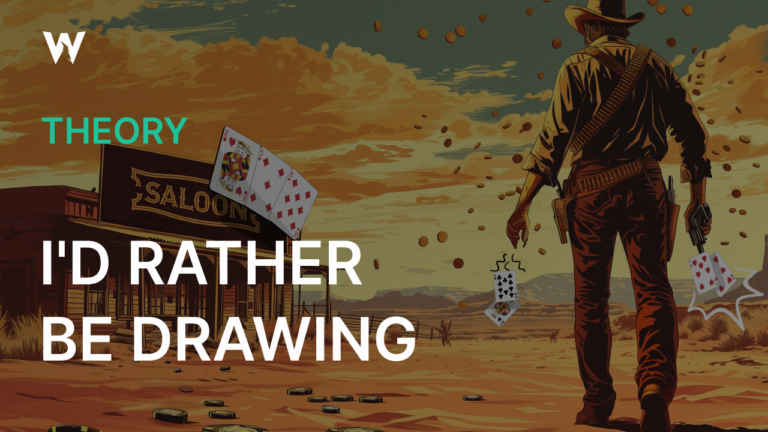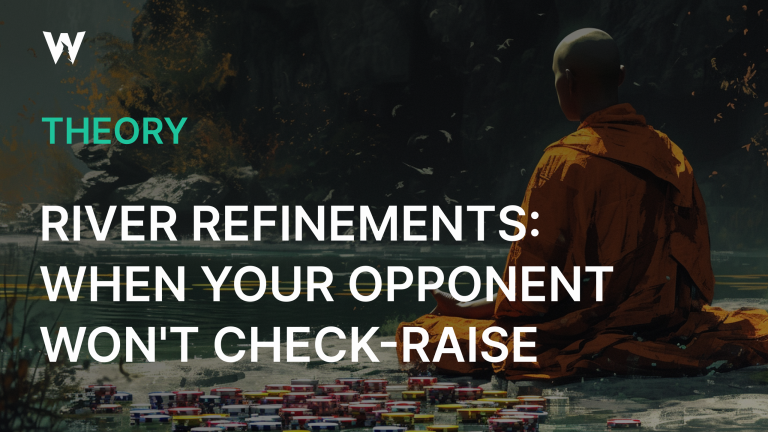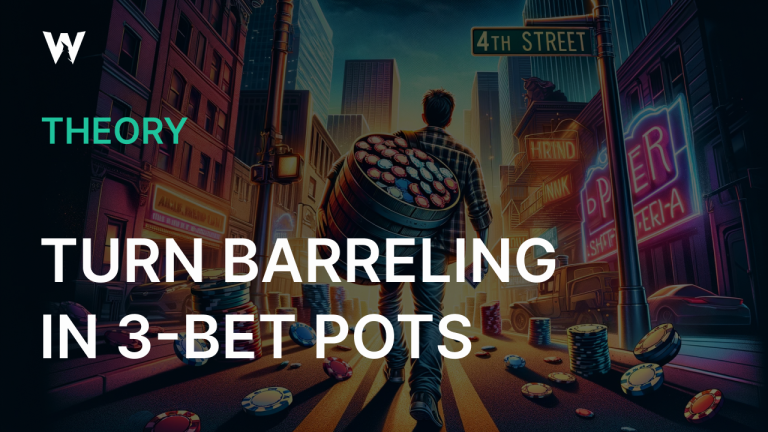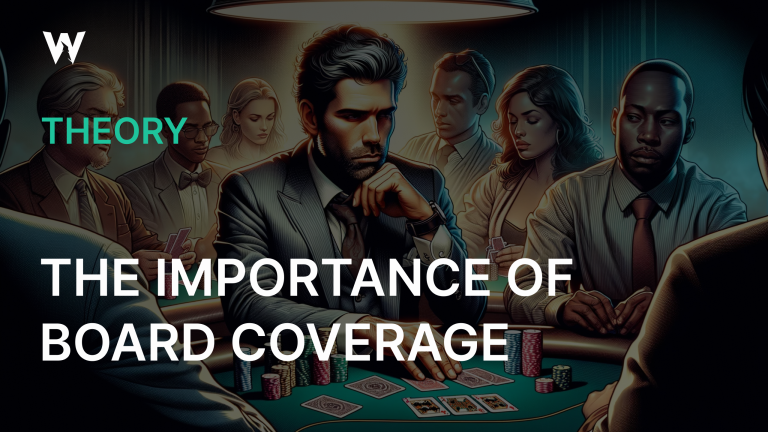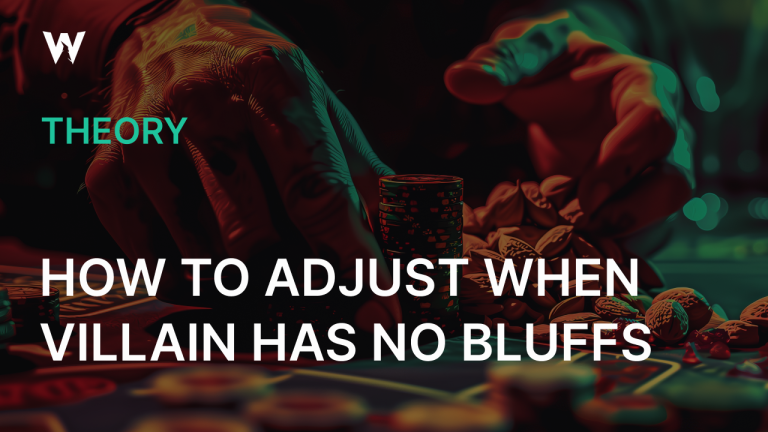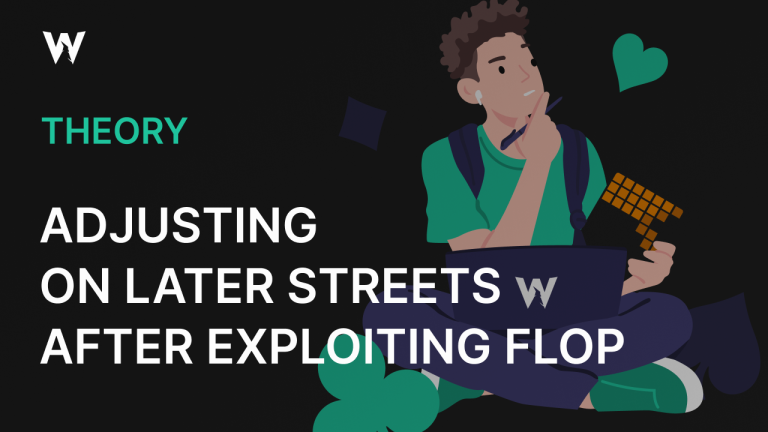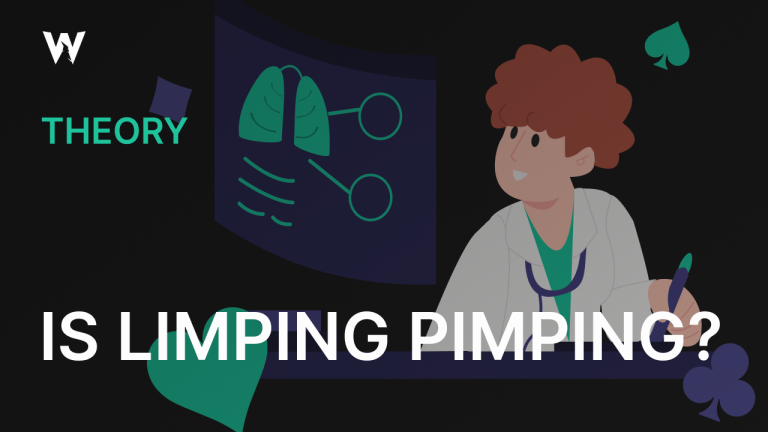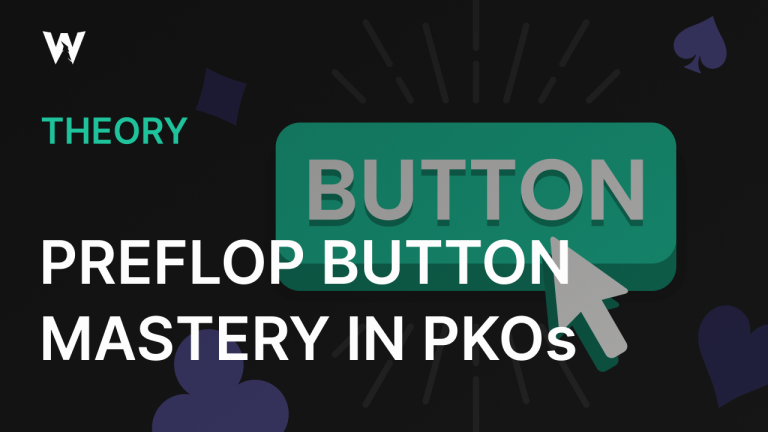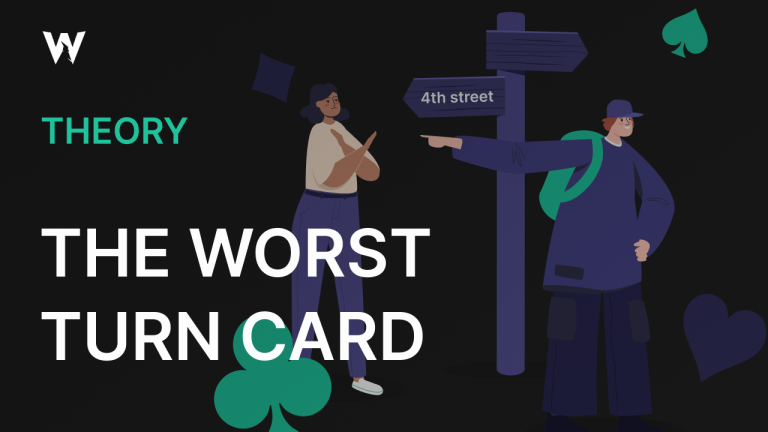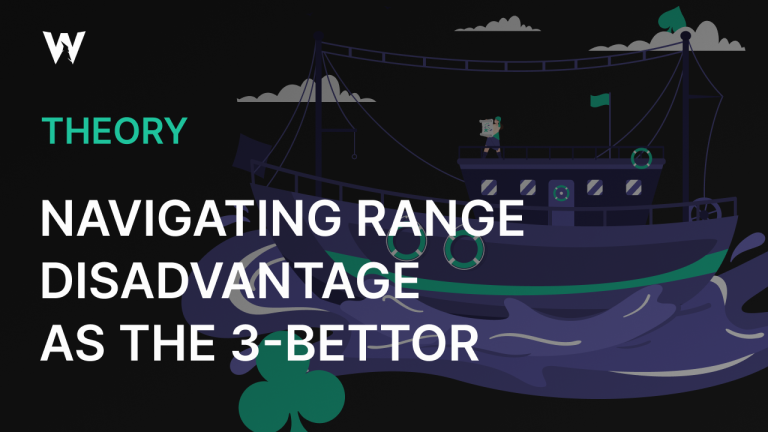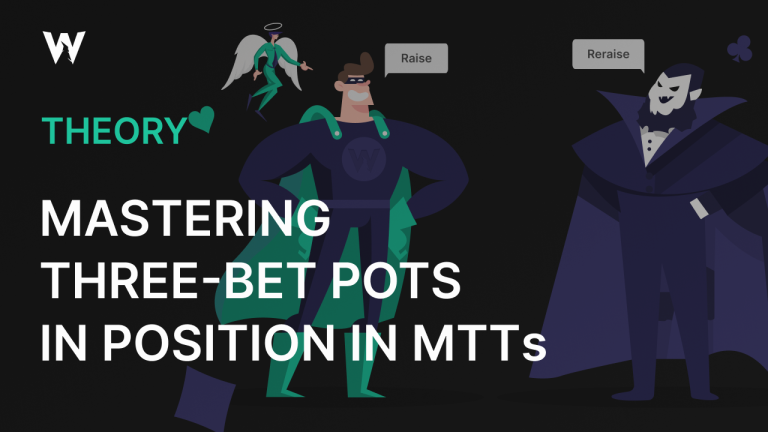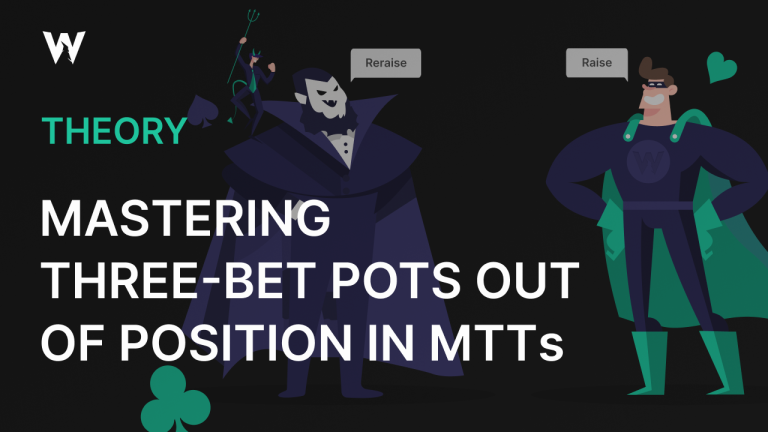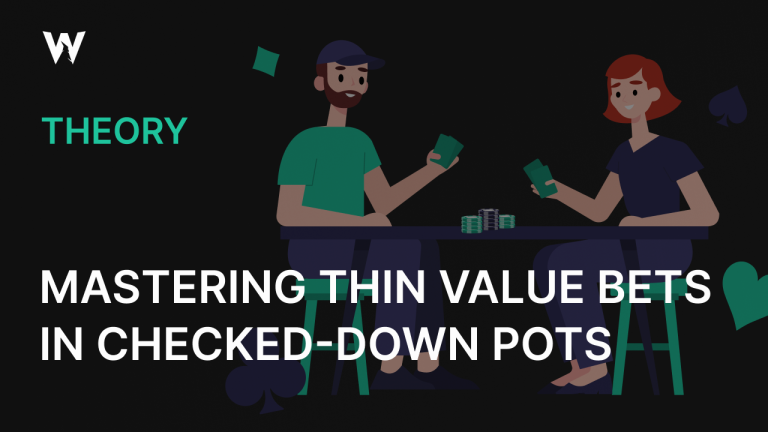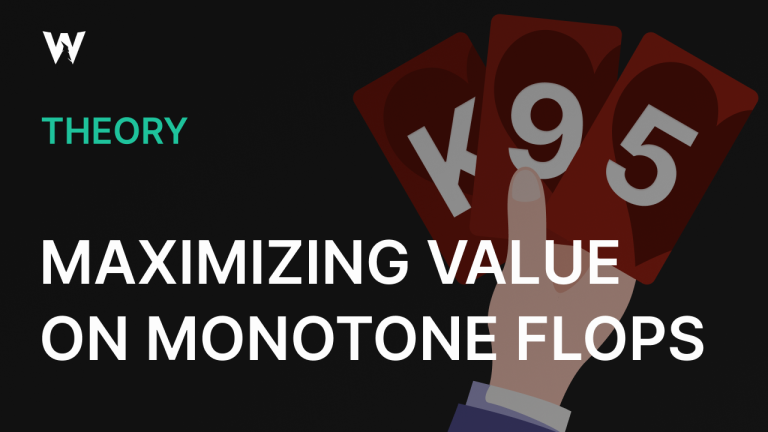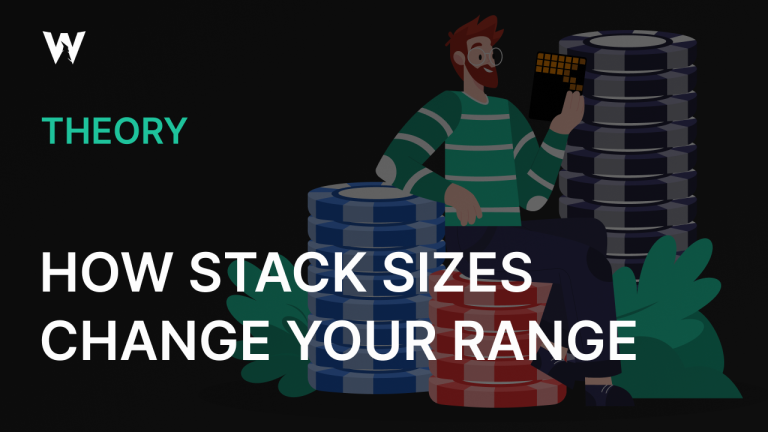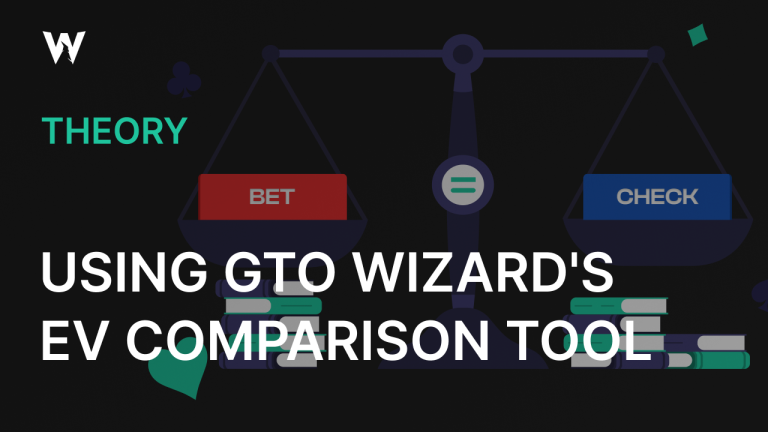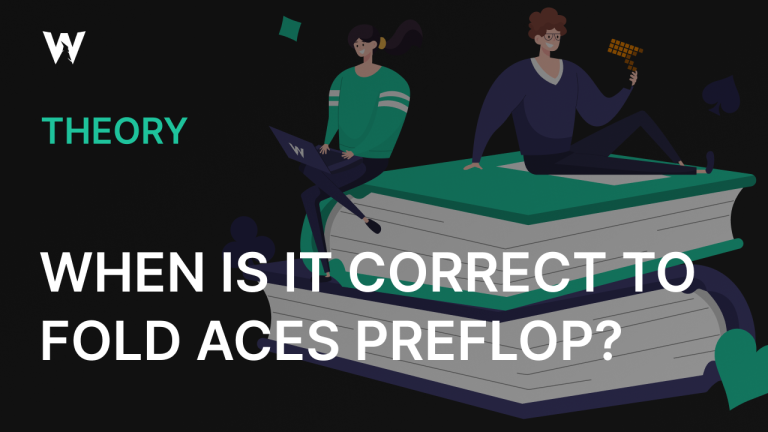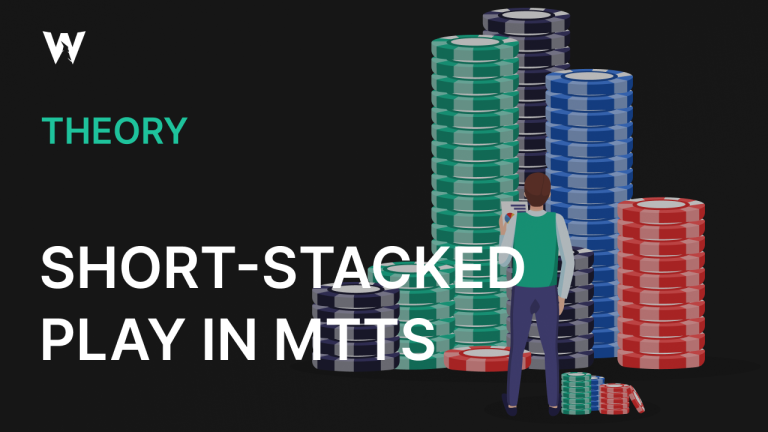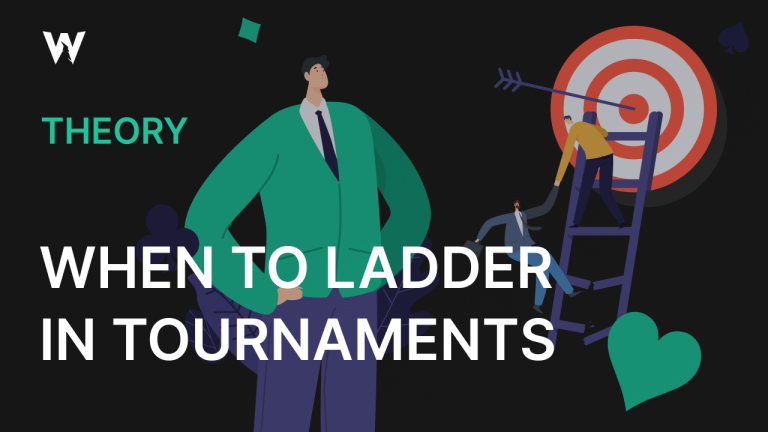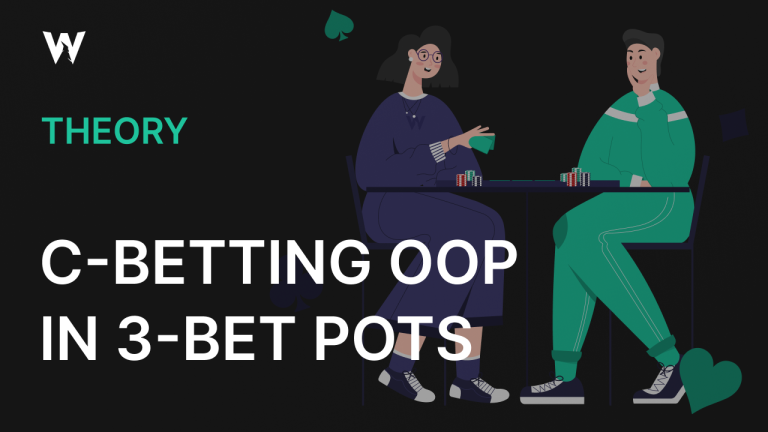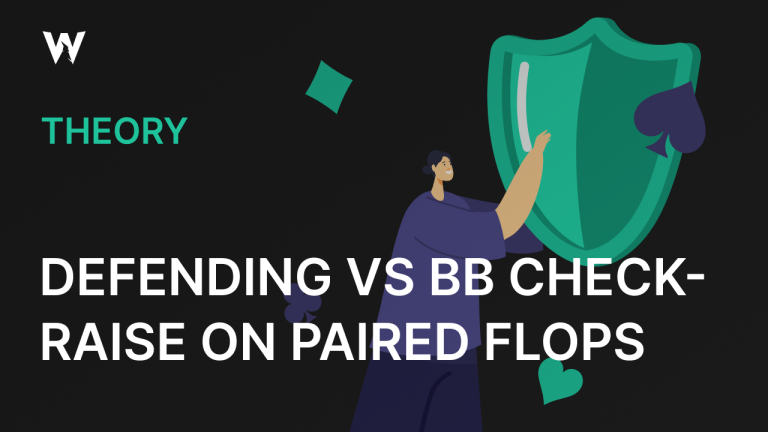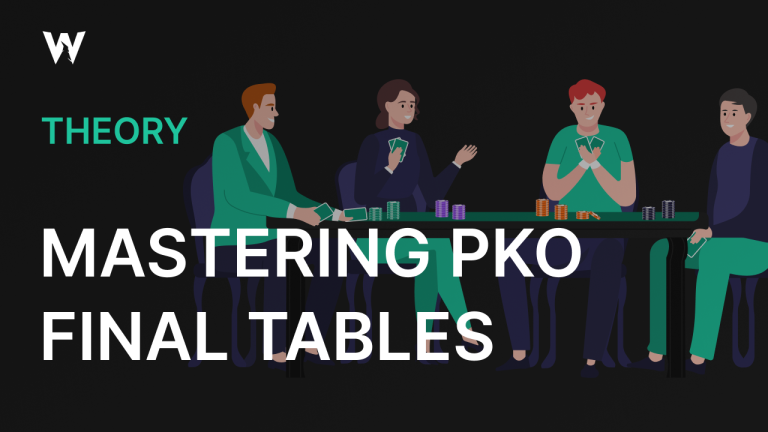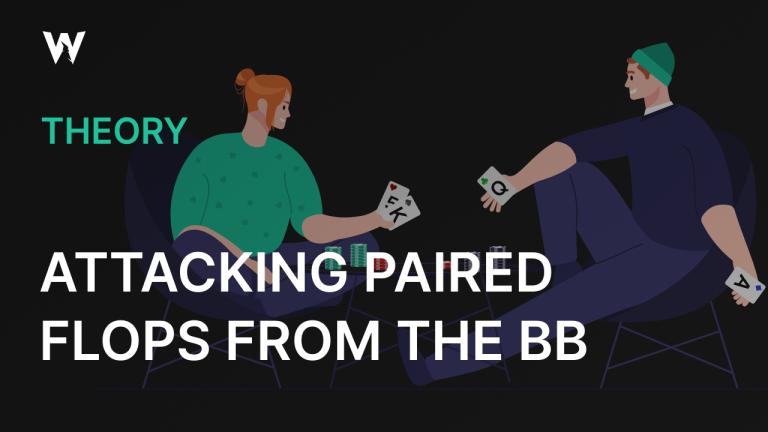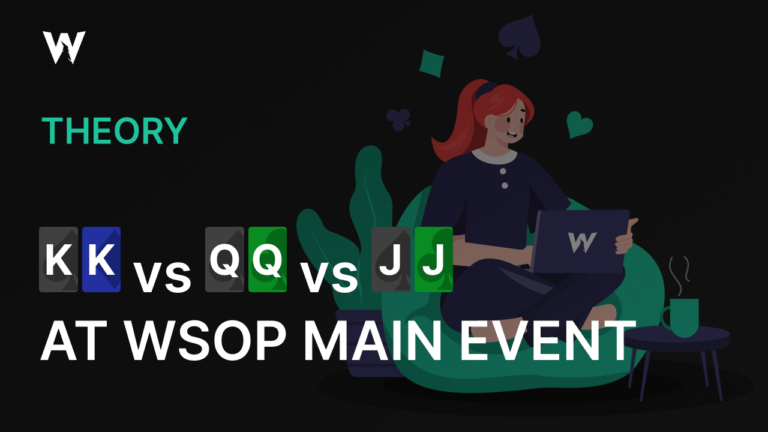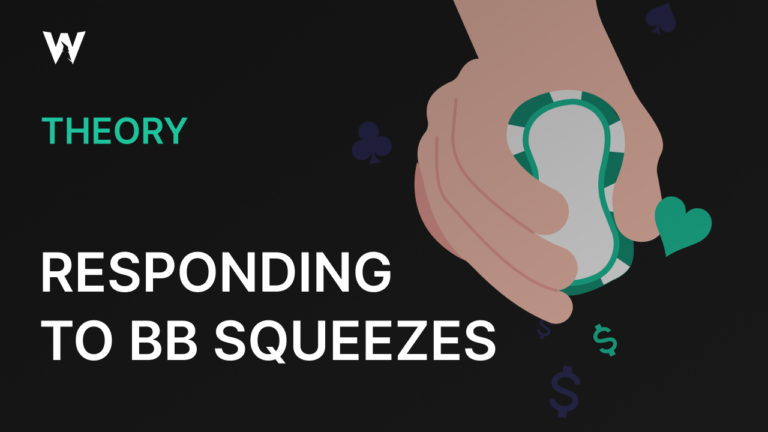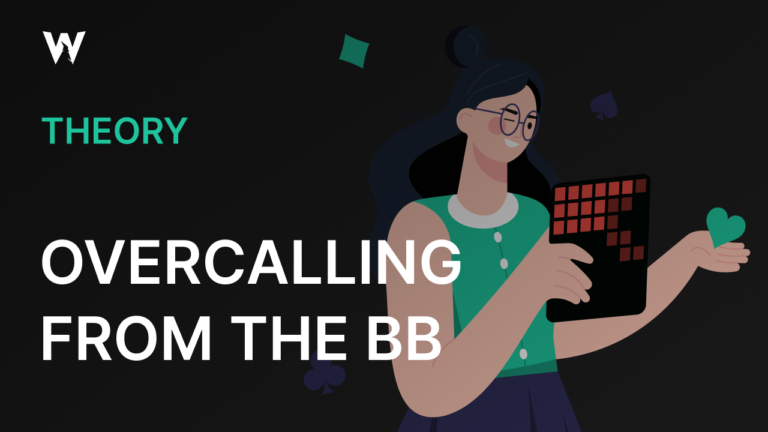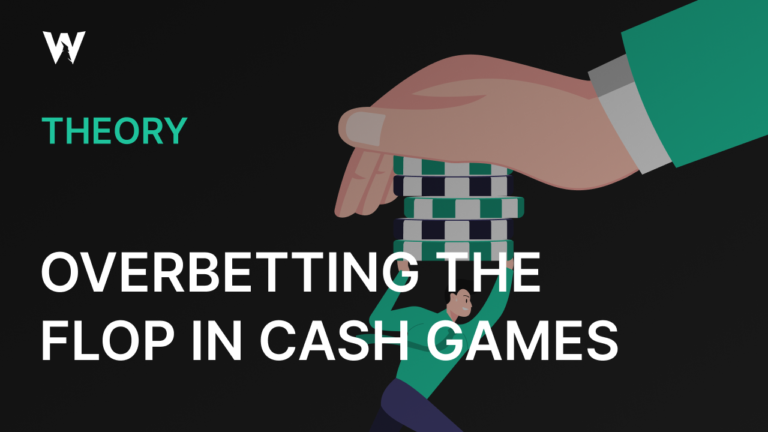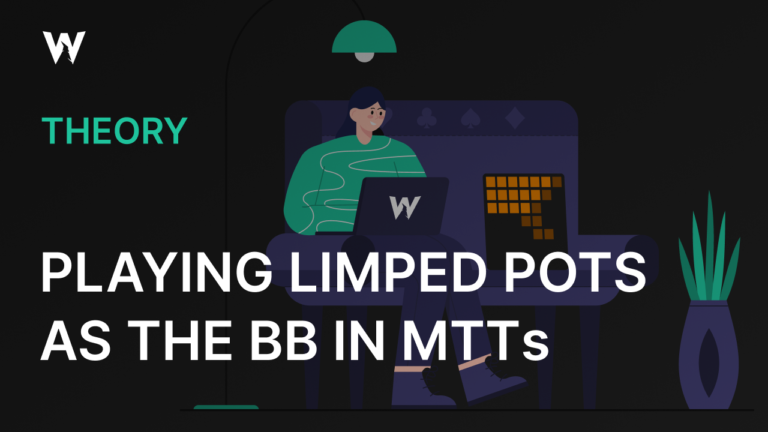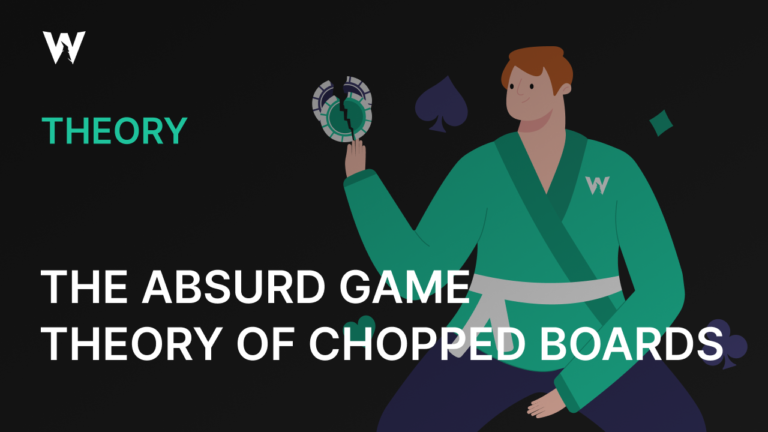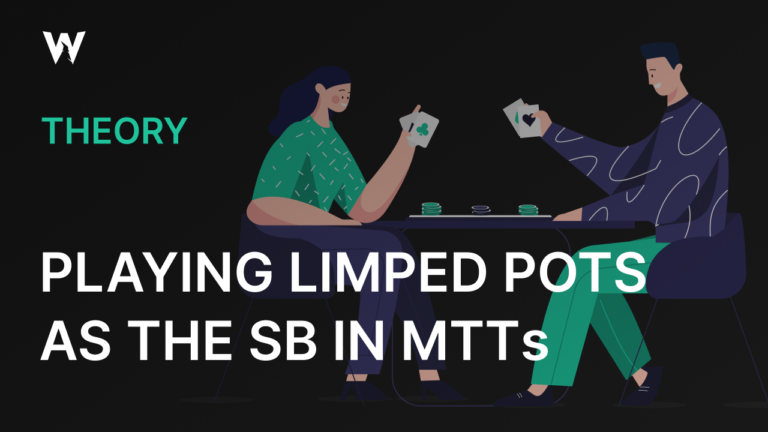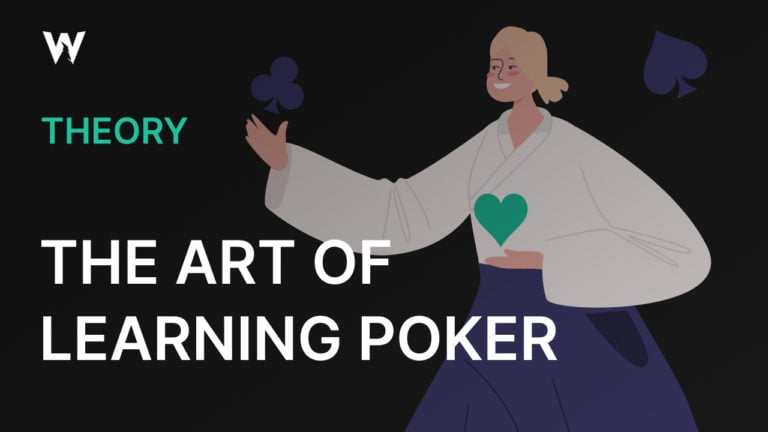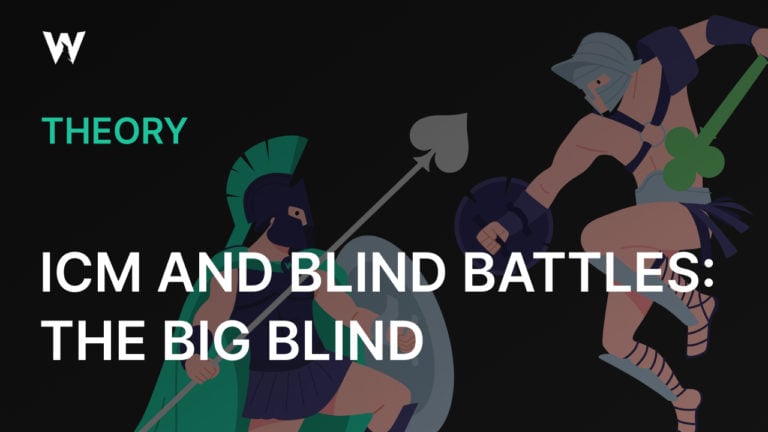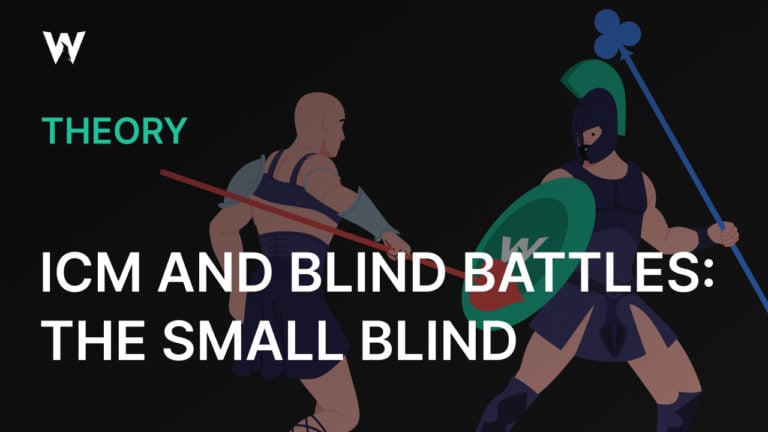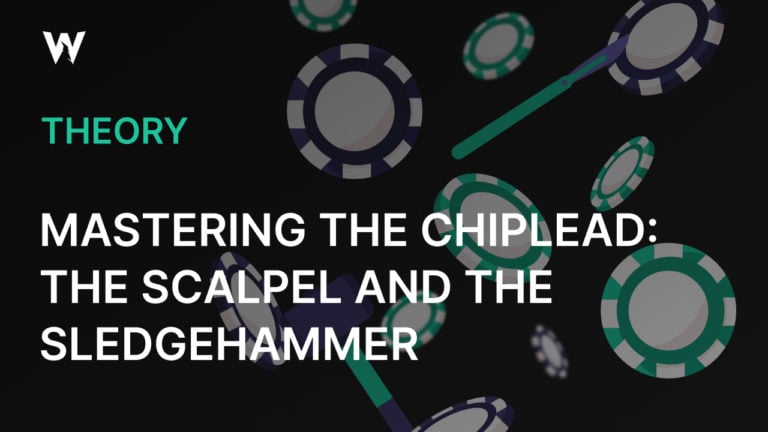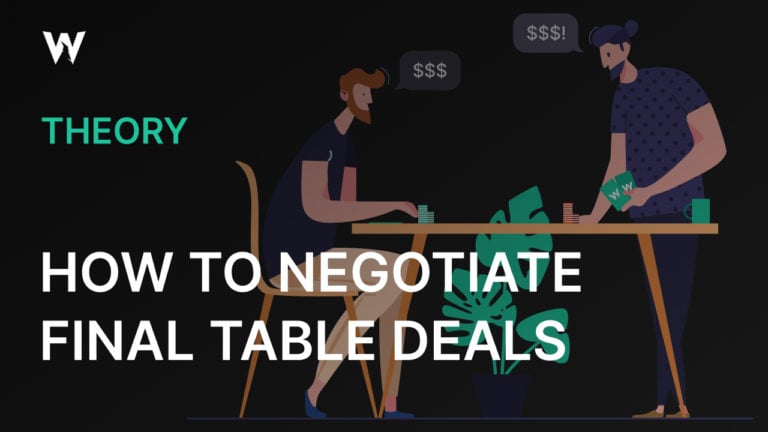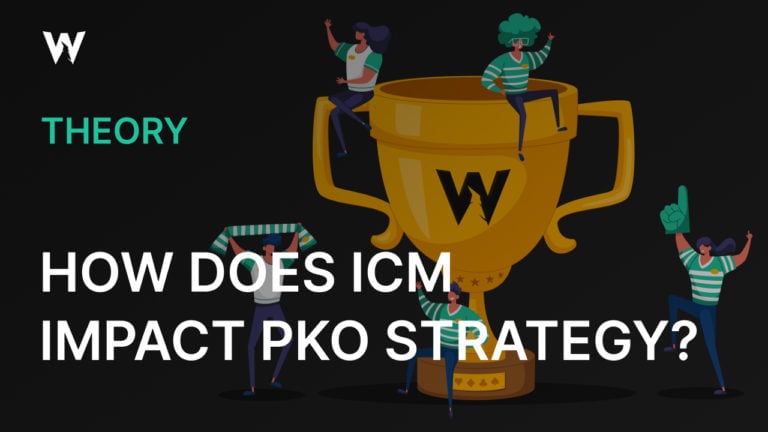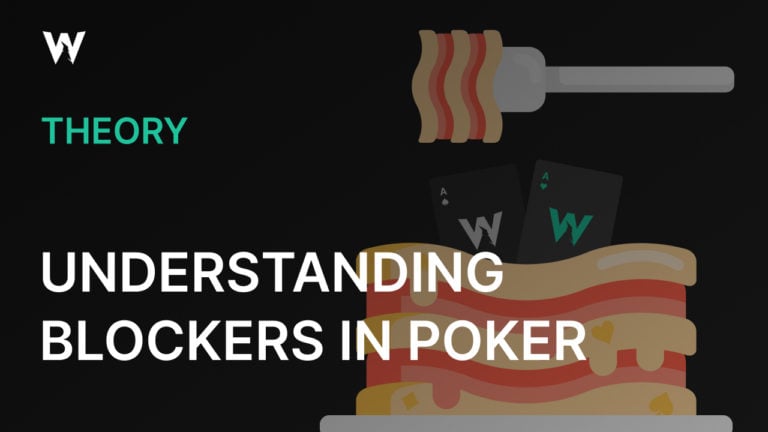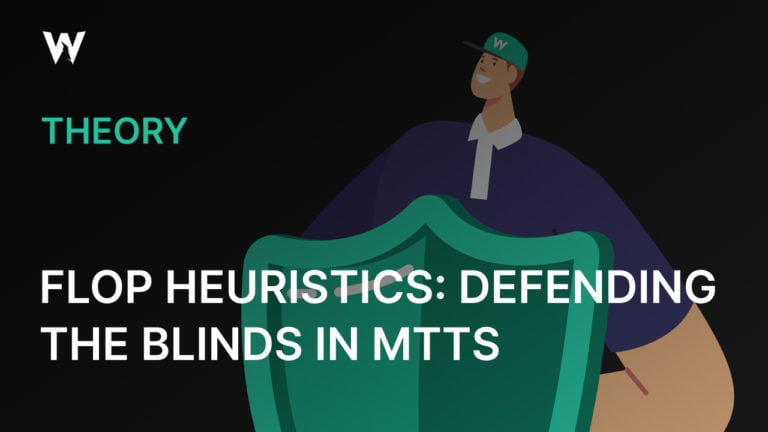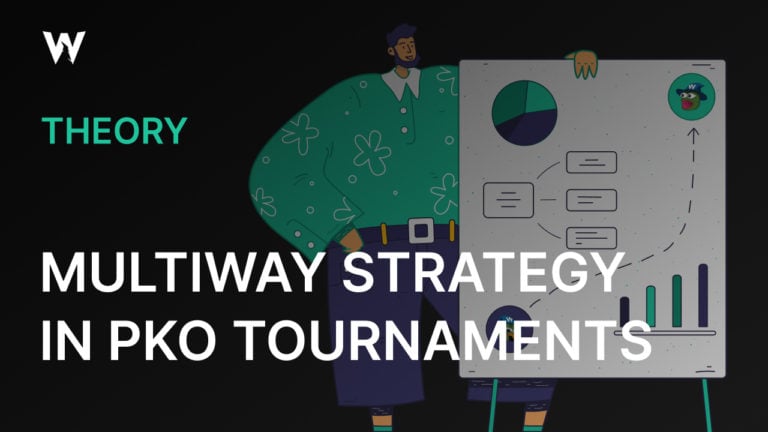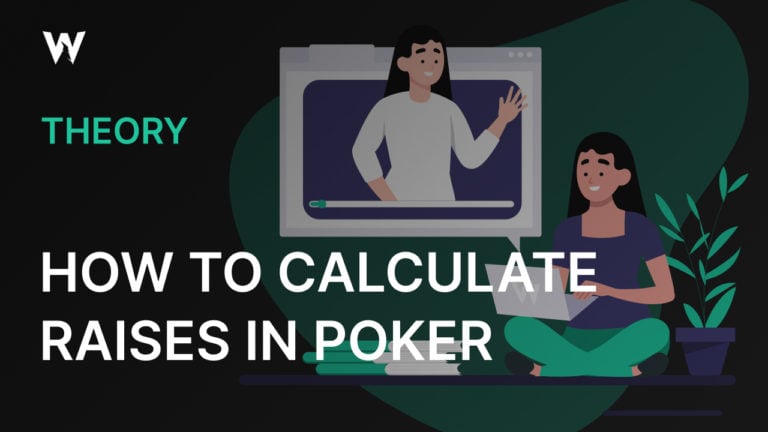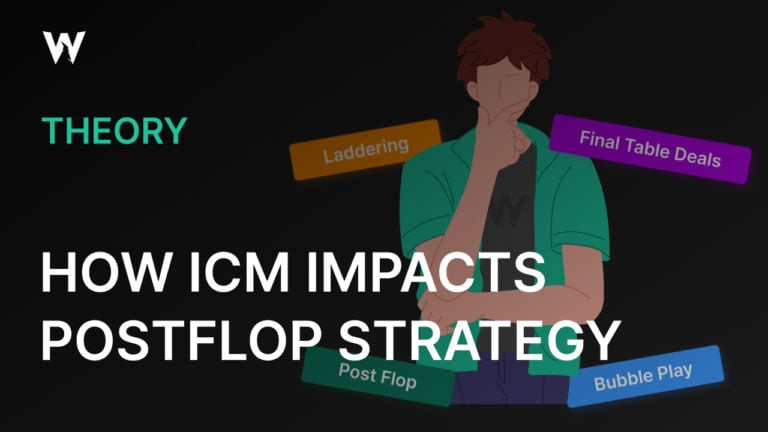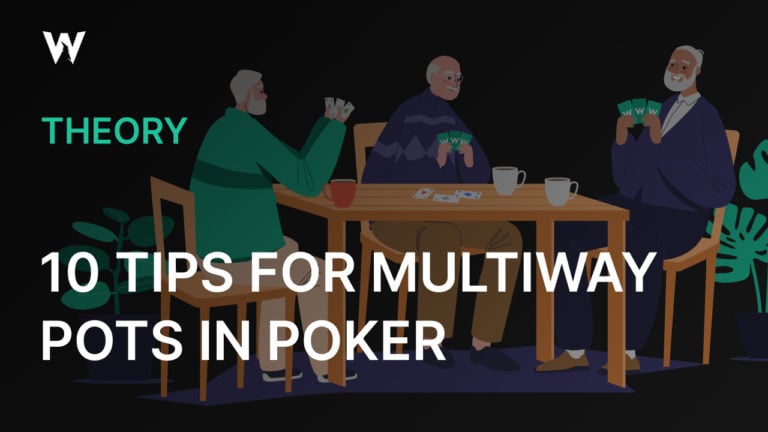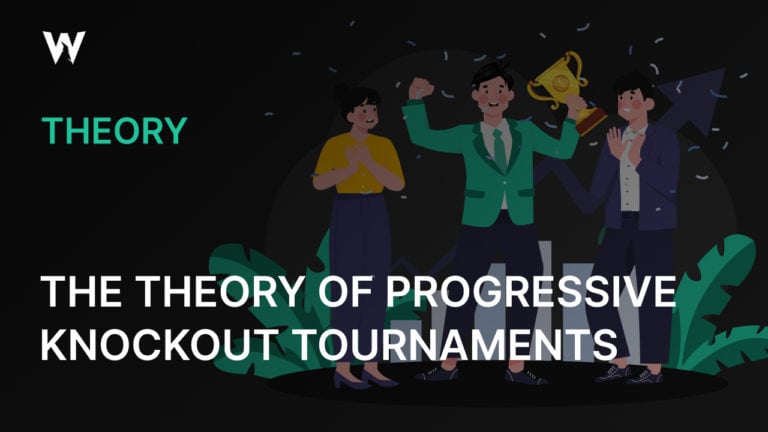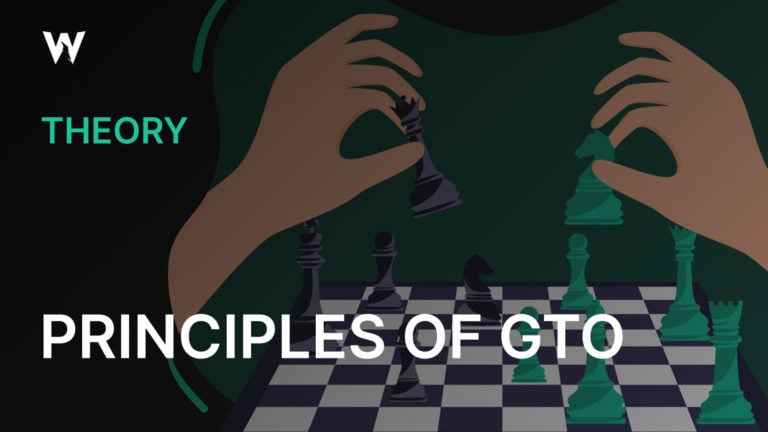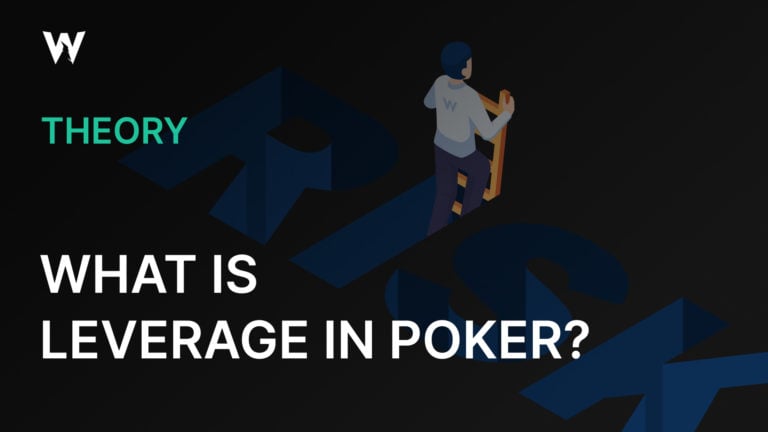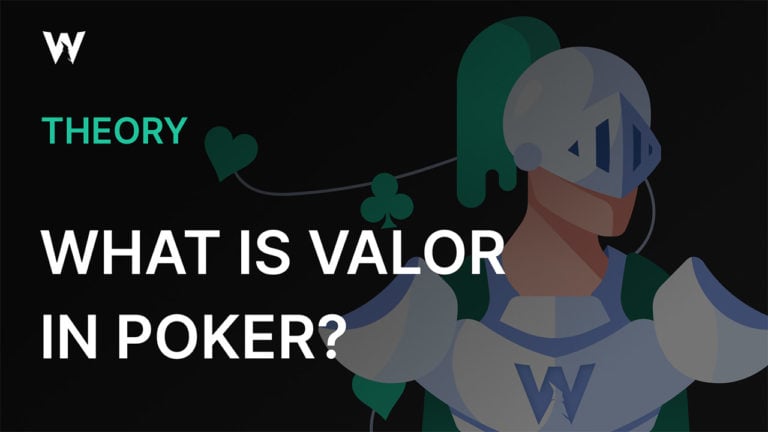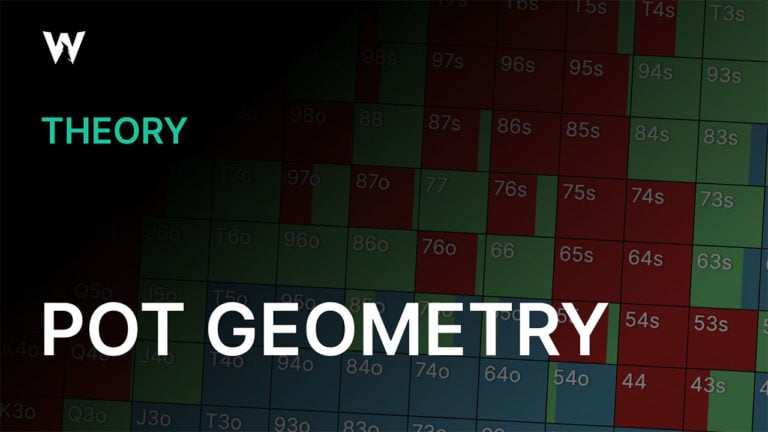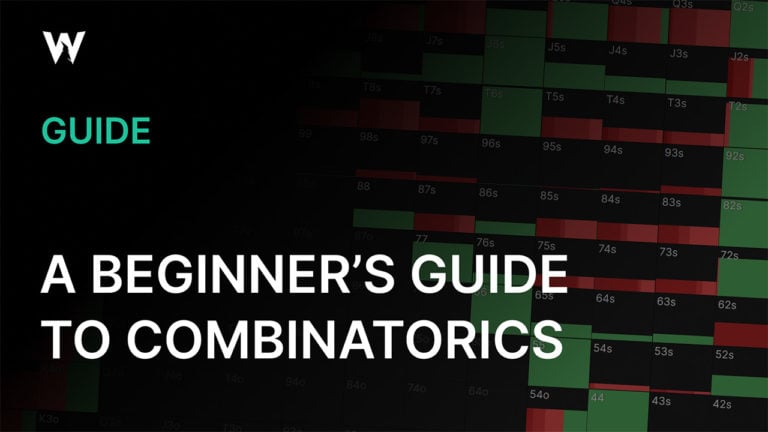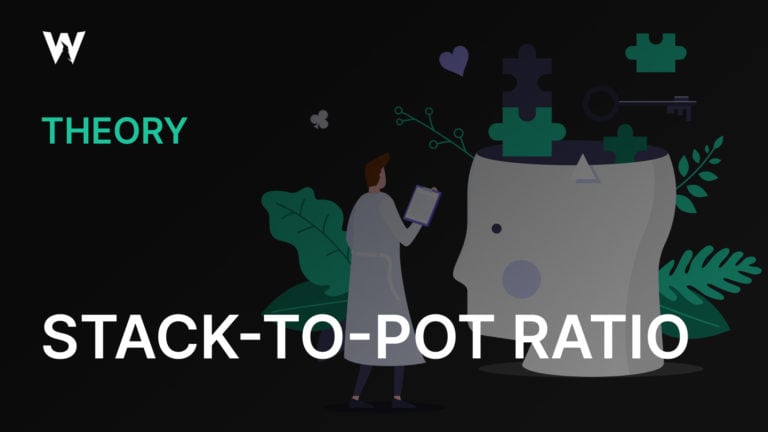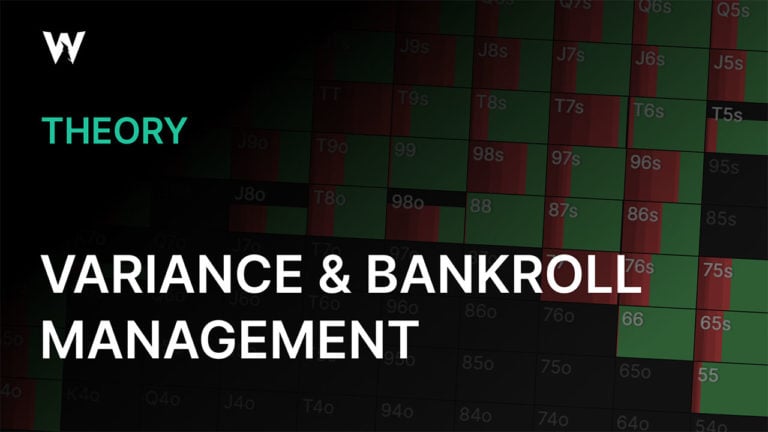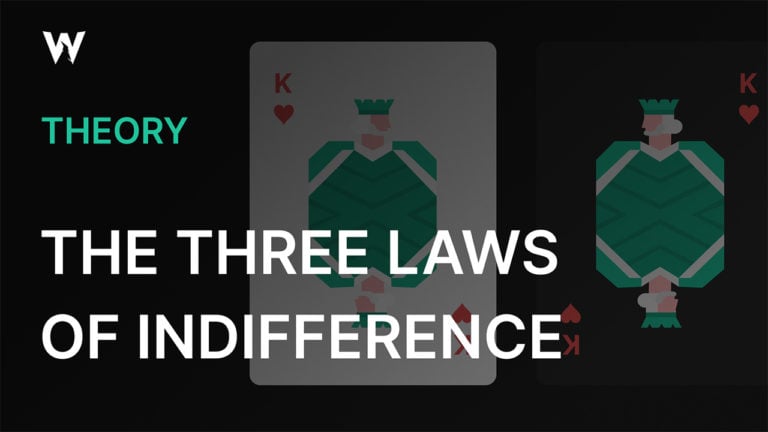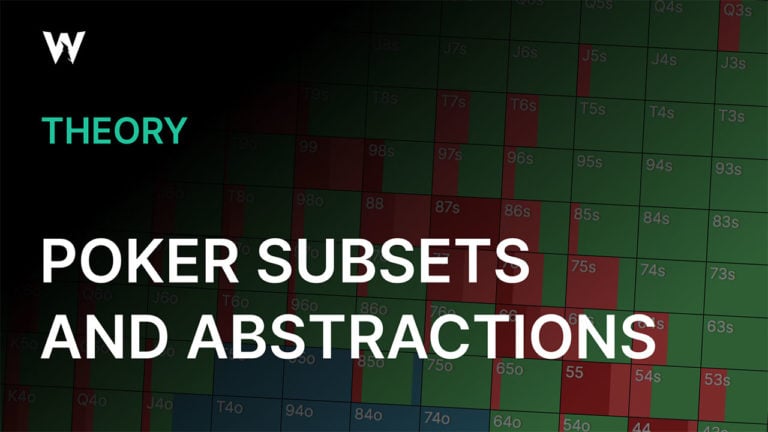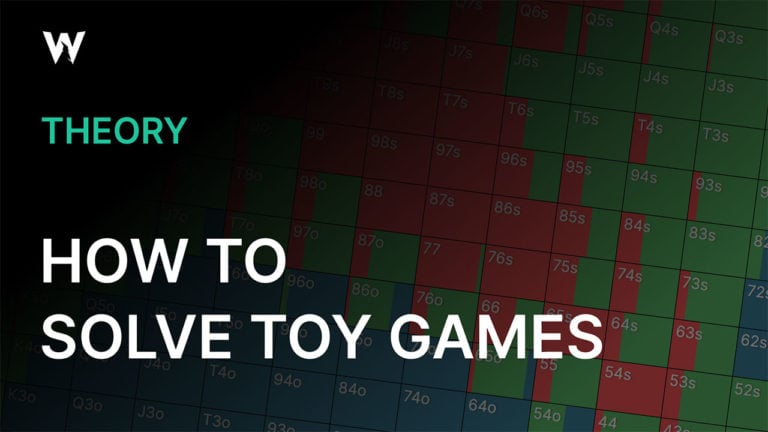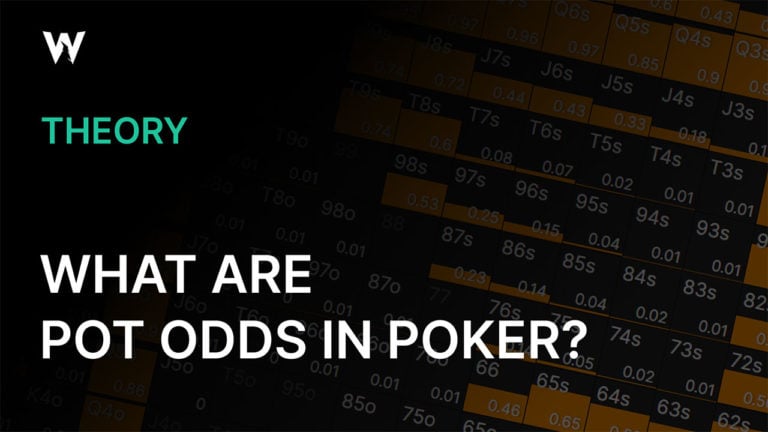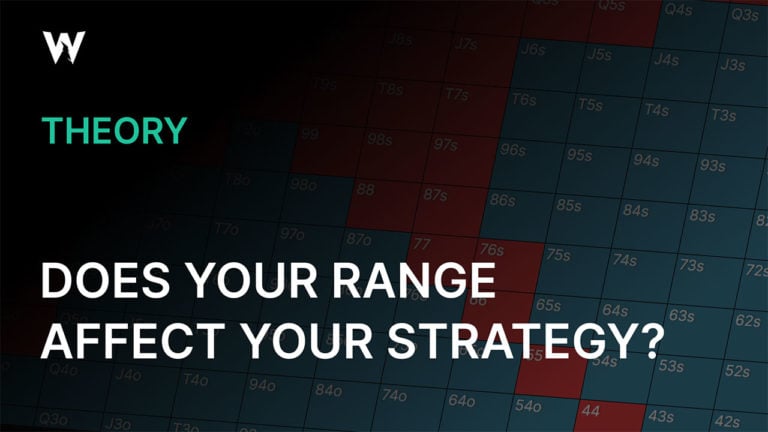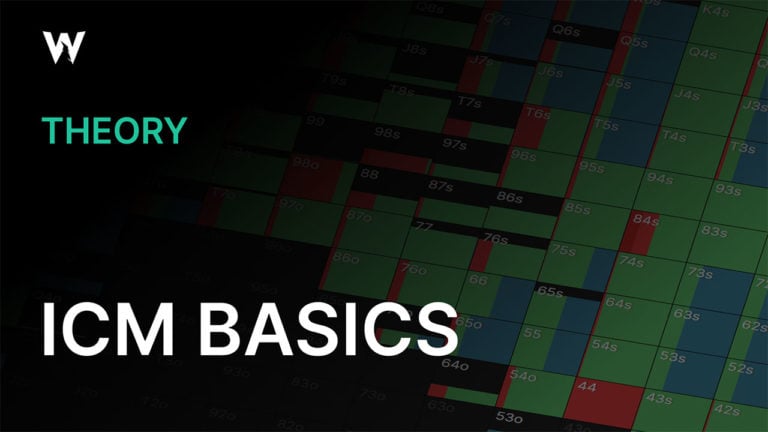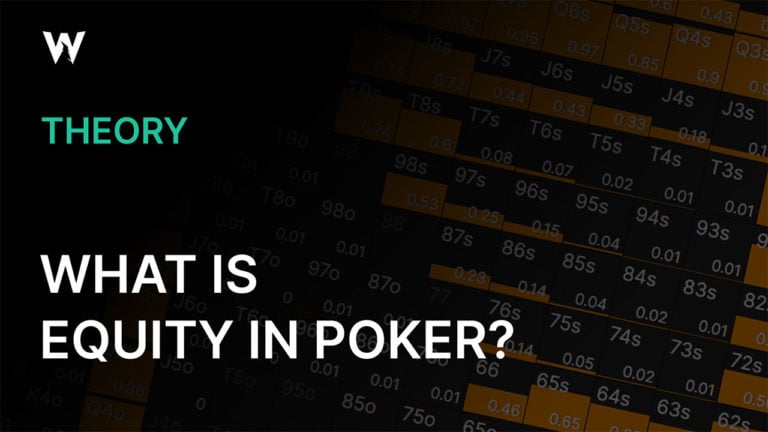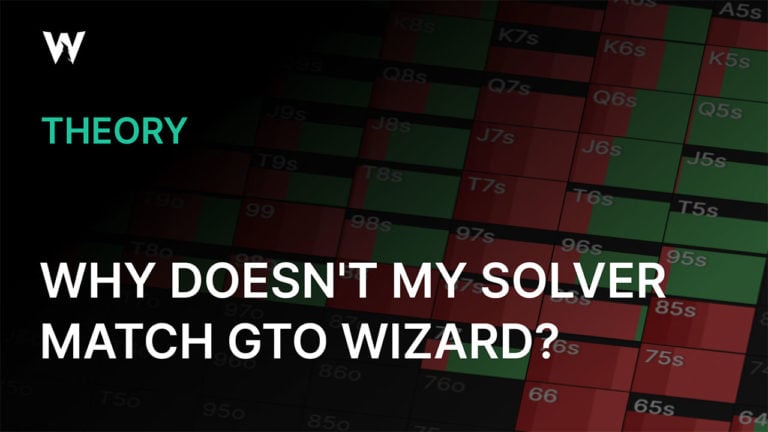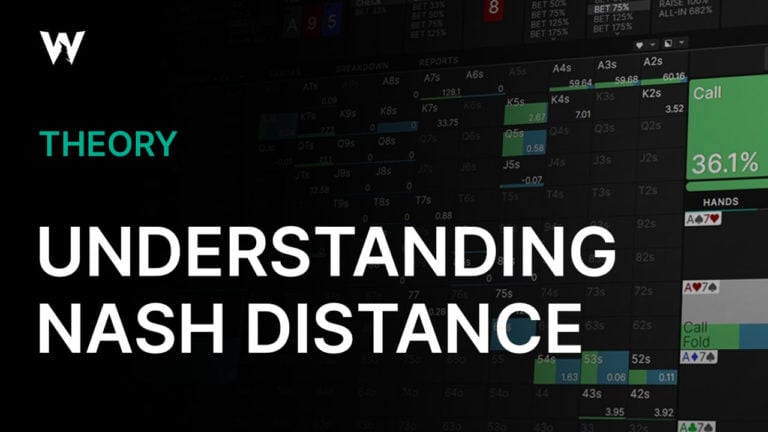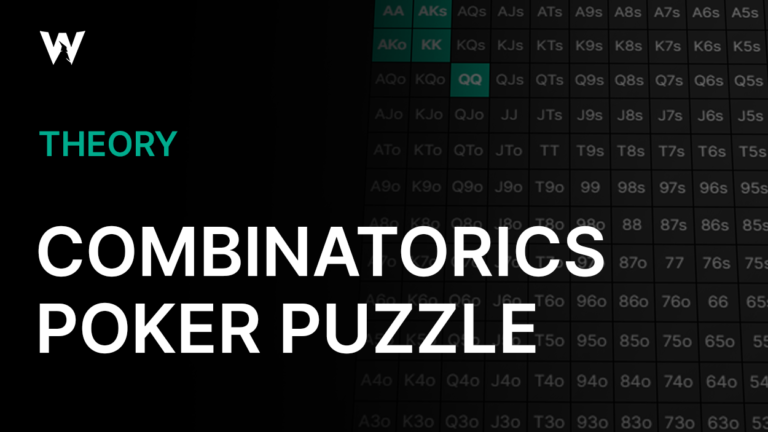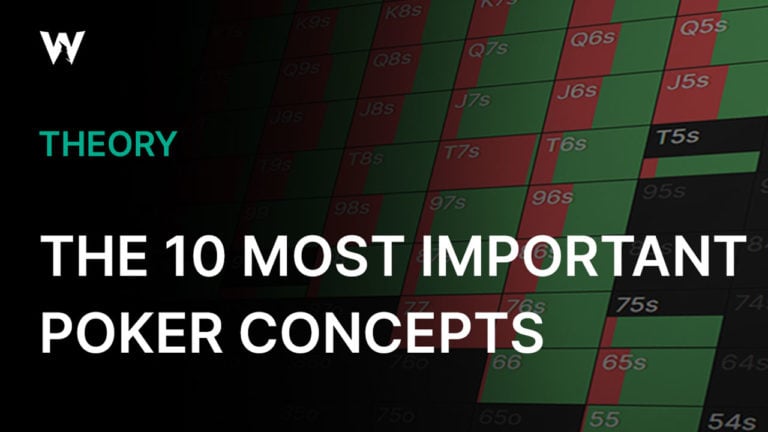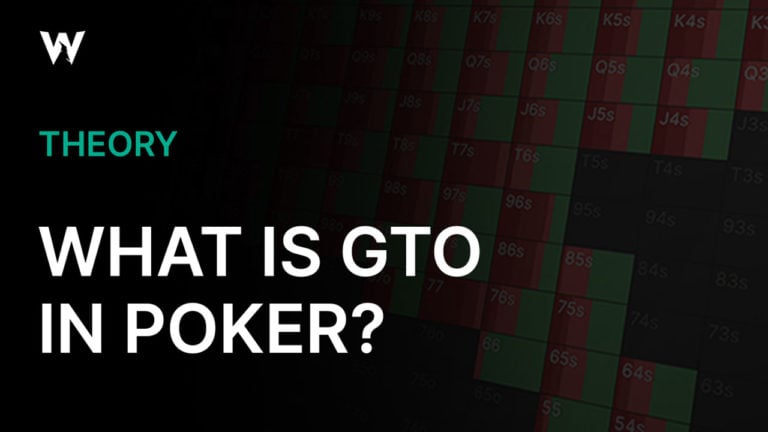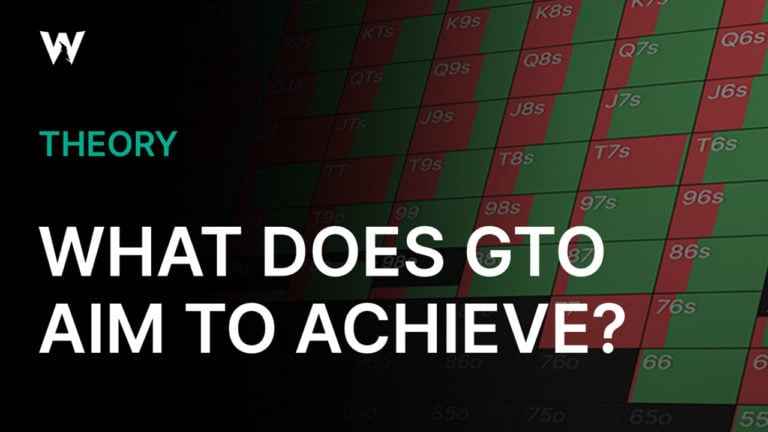When Half-Pot Bets Are Actually Appropriate
For many years, the half-pot bet was the default bet sizing for a lot of players. If you were unsure how to proceed in a hand, it looked like a “scary” enough bet size to make people fold to your bluffs, but not scary enough that they might not call your value-bets. No doubt, the fact that half pot was often a default bet sizing button in a lot of online poker clients also contributed to it being used often.
In the GTO era, we don’t see much half-pot bet sizing. Small bets or large/overbet sizings seem to achieve more.
Small bet sizes are great for when you have range advantage as they incentivize the opponent to stick around with weaker holdings. They are useful when the value of fold equity is low. We like to bet small with strong and “invulnerable” hands because we don’t want our opponent to fold, and we also want to balance our small-beting range so that we can thin value-bet more confidently with middling hands because of the reduced likelihood of getting blasted off the pot.
Big bet sizes, for example, are useful when we have a strong but vulnerable hand, like an overpair. Hands that are usually ahead now but aren’t likely to remain ahead, like on dynamic boards where a lot of turn cards would worry them. By sizing up, we can extract more value while we are confident that we’re ahead, and as the value of fold equity is high, we can deny equity to hands that can outdraw us. We get to bluff proportionally more often when we use larger bet sizings, and the bluffs should get more folds than a smaller bet.
But what about half-pot bet sizes? Is there still a place for them? Or should our bet sizes always be small or large, with nothing in between?
But what about half-pot bet sizes? Is there still a place for them? Or should our bet sizes always be small or large, with nothing in between?
I must admit, I did not know the answer going into this article, but it is the sort of question GTO Wizard can answer.
Half-Potting in Single-Raised Pots
Thankfully, the flop reports feature is a great place to start. This is the flop reports tab for NL500, UTG vs BB, single-raised pot, when the BB has checked 100% of the time. The first thing to note is the global tendencies across all flops.
⅓ of the time UTG checks, ⅓ of the time they bet small, 18% of the time they bet half pot, and the rest of the time (16.9%) they go for a larger or overbet sizing.
So, betting half-pot is actually more common than large betting in this spot.
Clicking the 50% pot bet column header allows you to sort the boards where that sort of sizing is used the most (or least) in single-raised pots between BB and UTG:
Barring a few outliers, the types of flops where this happens the most are crystal clear. They are mostly two-tone flops with at least two Broadway cards. A flop like Q♦J♥T♥.
These are flops where the pre-GTO consensus would be to bet big. This is what would be referred to as a ‘wet board’ in that it hits many ranges, and many hands can improve on the turn or river.
Diving Deeper
To discover more, let’s look at the Q♦J♥T♥ flop. This is the UTG’s strategy when checked to by the BB:
It’s a range-bet featuring a mix of sizes, which isn’t that common for the typical bet 100% of range strategies that mostly favor small bets. There is almost as much large (76% pot) betting as there is small (33% pot) betting. The predominant size, however, is half pot.
This is how the two ranges match up against each other:
UTG has 62% equity, and looking at the equity buckets, they crush the BB across the range. UTG has more nutted hands and no trash. Where I think this range is most telling, however, is in the 70–80% equity range. UTG has 25.5% of their range in that bucket, while the BB only has 4.6%, and, crucially, 93.9% of their hands are in buckets below it.
The 70–80% equity hands for UTG are highlighted in below graphic:
Mostly, solid one pair hands (often with the additional equity of some kind of draw), with some two pairs and the low end of the straight in there too.
50% Pot C-Bet
Let’s see what happens when UTG puts out that 50% pot bet. This is the BB response:
Lots of worse hands call; for example, most of our value-range beats hands like KTs and J9s. We generate folds from a lot of Ace-x and 8-x that had outs against a varying portion of our value in the form of a gutshot or new top pair. Additionally, there’s also a small amount of folding by King-x and some more by 9-x, both having an open-ended straight draw. We don’t fold out any flush draws. Top pair folds sometimes to this bet.
This is how the continuation strategy looks like in the various useful bucket features:
33% Pot C-Bet
Let’s see what happens when UTG bets small instead:
The range looks broadly the same, but almost all of the King-x and more 9-x with open-ended straight draws continue to the smaller bet. A lot more backdoor flush draws continue as well. There is also a little more raising.
And again, the continuation strategy organized as equity buckets:
Now, the majority of hands in the 25–50% EQ bucket continue to this smaller size, as does anything above it.
76% Pot C-Bet
Finally, let’s look at the BB response to the large bet:
There is much more folding and much less raising. The hand classes that start to waver are backdoor flush draws. Top pair folds a reasonable amount of the time as well.
Less than a third of the hands between 25–50% continue to the overbet.
An Eye on the Future
Let’s also look at another useful feature: turn reports. If it went check/call of a large flop c-bet, this is what UTG’s equity would be on each turn card:
Other than a non-heart King, there are no good cards for UTG! All of them favor the BB, who will have a much stronger range going to the turn.
It’s not quite as bleak if the same thing happens for the smaller bet size. These are UTG’s turn equities on every possible turn card:
Now, UTG is also a favorite on the blank turns (7, 6, 5, etc.), albeit just a very marginal one. These cards did not improve either player, and the BB called wide enough so that UTG maintains a slight range advantage.
For completeness, let’s look at the turn cards for when it goes check, half-pot bet, call:
It’s similar to the response to the large bet; on most cards, UTG isn’t a favorite anymore because the BB cleaned up a lot of the trash in their range.
My interpretation of all of this data is as follows.
- We have a lot of very strong hands in our range, so we want to bet all the time for value.
- However, as you can see above, our range struggles on many turn cards.
- We have range advantage, but this is a very dynamic flop. When we have a solid one pair hand, any A, K, Q, J, T, 9, 8, 7 or ♥ could set us behind, even if it has improved our own hand.
- So, betting small is out of the question as it allows the gutshots, open-enders, and backdoor flush draws to see a turn profitably.
However, this seems like a terrible board to bet big on. We could already be betting into a nutted hand, and there are so many draws that never fold on this flop. Betting large only puts us in a terrible situation on the turn where we want to see one of the few cards left in the deck that favors us.
So, with something in the middle, like a medium half-pot bet, we strike a compromise that captures most of the upside of the other two bet sizes that flank it and diminish their downsides. We don’t want to let them see a cheap turn, but we don’t want to pile a lot of money in the middle either and lose our equity advantage on a bad turn. We are being pulled in both directions, between wanting to bet large and small, and we land somewhere in the middle.
What About Half-Potting in 3-Bet Pots?
Now, let’s look at a very different situation that also yields a lot of medium-sized bets. This is another NL500 cash game spot where CO opens, SB 3-bets, and CO calls.
The predominant bet size across all flop types is one of the smaller bet sizes, we do not see much overbetting at all, but there is a decent amount of half-pot bets, which are used globally 16.9% of the time.
These are the most common boards where the 50% pot bet size is used in 3-bet pots between SB and CO:
Just as there was a clear board type in our study of single-raised pots, there is also a clear texture in our 3-bet pot. It is not the two Broadway two-tone flops, quite the opposite. It is mostly paired rainbow boards, with a high pair and a low third card.
JJ5 rainbow is the flop with the highest frequency of half-pot betting, so let’s look at that. This is the first action from the SB:
This is practically a range-bet, but rather than a small bet, half pot is used the large majority of the time.
This is how the two ranges stack up:
What stands out here is that the SB has a significant advantage in the 60%+ EQ buckets. However, both players have a comparable portion of nutted hands in the top bucket, which is filled with trip Jack-x and stronger in this scenario.
20% Pot C-Bet
To explore why half pot is favored, let’s look at the CO’s responses to certain bets, first the 20% pot bet:
Almost nothing folds to this bet; even the low cards like 76s that have backdoor straight and flush draws continue.
50% Pot C-Bet
This is the response to the favored half-pot bet:
Now there is a healthy amount of folding, which includes some low pairs, Ace- and King-high.
75% Pot C-Bet
An overbet is never used, but this is the CO’s response to the 75% pot bet, which is used some of the time:
Now, there is a lot of folding, including all the underpairs (22–44).
Returning to the two ranges, both players have a similar amount of Jack-x, but the SB is crushing the CO for hands in the 60–90% equity buckets, which are all the pocket pairs 99 and higher.
These are hands that are likely ahead but benefit from protection. QQ, TT, and 99 are all quite pleased to see the Ace-x and King-x fold to the half-pot bet, which never fold to the 20% pot bet. There are also plenty of hands in the CO’s range that are crushed by these hands, most notably the smaller pocket pairs. When we bet 75% pot, the really small pocket pairs fold, and the calling range skews more towards very strong hands.
This is confirmed when we look at the equities for the SB for all the possible turn cards when it goes small bet, call:
The Ace and King are particularly bad turn cards for the SB, though none of them are particularly good. Because they called with such a wide range, any of these cards could improve the CO.
If it goes bet-call for the half-pot size, some of the middling cards prove to be good cards for SB. Perhaps because they are unlikely to have helped either player (but in particular, even less likely to have helped the CO). So, the player who was ahead on the flop is usually still ahead on such turns.
For completeness, these are the equities on the turn cards when it goes check/call for the 75% pot bet:
There are actually lots of great turn cards for the SB now; all the ‘blank’ cards essentially, so the ones where CO usually receives little if any help from.
- It appears that a small bet on this sort of flop lets in too many Ace-x and King-x hands, which is bad for the SB’s value range of pocket pairs.
- Betting large folds out too much trash and weights the CO more towards trips or better. We don’t want to put that much money in when villain could already be nutted, but we are ahead of most of the CO’s range, and we want to extract value.
- Therefore, as its name suggests, the medium-size bet is indeed the middle-ground ideal bet size.
Conclusion
As I often like to point out, I am not a professional poker player and did not come into this article knowing the reason when and why to bet half the pot. I have no doubt missed a few key points, and I am certain there will be other scenarios where the half pot-bet is favored. But thanks to tools like GTO Wizard, particularly their reports features, I was able to explore this question and arrive at some solid reasons for the half-pot bet.
Small bets achieve a number of things. They incentivize weak hands to continue, meaning we can extract value from them with marginal hands and they reduce folds when we have a very strong hand. As bluffs, we risk the minimum when they work out.
Large bets, on the other hand, extract more value and also deny more equity when we have a strong but vulnerable hand. As a bluff, large bets yield the most folds.
While the boards were radically different in today’s examples, half-pot bets were used when we found ourselves stuck between these competing incentives. Medium-size bets are employed when our range is strong and benefits from protection, but bloating the pot too enthusiastically could spell disaster. The dual motivation of wanting to get value but being cautious lands us in half-pot bet territory.
Author
Barry Carter
Barry Carter has been a poker writer for 16 years. He is the co-author of six poker books, including The Mental Game of Poker, Endgame Poker Strategy: The ICM Book, and GTO Poker Simplified.
Wizards, you don’t want to miss out on ‘Daily Dose of GTO,’ it’s the most valuable freeroll of the year!
We Are Hiring
We are looking for remarkable individuals to join us in our quest to build the next-generation poker training ecosystem. If you are passionate, dedicated, and driven to excel, we want to hear from you. Join us in redefining how poker is being studied.


